- Home
- Ann M. Martin
Maid Mary Anne Page 5
Maid Mary Anne Read online
Page 5
“Really?” squealed Becca. “Euuw.”
“No!” said Vanessa. “Guess again.”
She looked around.
“Needle and thread,” said Buddy Barrett without looking up.
Vanessa beamed. “Yes! Old Mother Twitchett is the needle, with one eye and the thread is her long tail. It’s sort of poetic metaphor.”
“We get it, Vanessa,” said Nicky, not rudely, but firmly. Vanessa’s poetic leanings include not only breaking into poetry at random intervals, but a fondness for words, especially when she was saying them.
Vanessa was as accustomed to Nicky as Nicky was to her, of course. She nodded and returned to her sewing.
I checked each person’s progress (did I mention that Claudia could thread a needle and had a very nice running stitch?) and discovered that Charlotte knew some embroidery stitches.
“A chain stitch!” I said. “And a French knot. That’s great, Charlotte.”
She beamed. “I know how to make a fence stitch, too,” she told me.
“Terrific. Do you think you could help me show those stitches to everyone else?”
“I think so,” said Charlotte.
So after a basic sewing stitch, we began learning stitches for making pictures on cloth — embroidery. Everyone liked learning that as much as I remember I did when I first started sewing.
When the kids had filled up their scraps of material with running stitches and basting stitches and chain stitches and fence stitches and French knots, and had more or less mastered how to knot off the ends of the thread, I pulled out the sewing dictionary and the quilt books and passed them around.
“This is just to give you an idea of all the things you can sew. I was thinking we could work together on a project,” I explained.
“Like a tapestry,” Charlotte said. “We could embroider a really beautiful tapestry and hang it on a wall.”
“Wow,” said Claudia, flipping through a book of modern award-winning quilts. “These are awesome. Look at this one … it’s sort of like Georgia O’Keefe meets Steven Spielberg’s special effects guy.”
“Can we make a quilt?” asked Vanessa. “Like the fairy-tale quilt in Mrs. Towne’s house?”
“I don’t want to do fairy tales,” said Nicky. “I want to make a crazy quilt.”
“I think a crazy quilt might be a little hard for us as beginners,” I said. “I’ve never made a quilt, either, you guys, so I’ll be learning along with you.”
“What about a friendship quilt?” Claudia suggested.
“What’s that?” asked Buddy.
“Ah, well, here’s a picture of one. Mary Anne will explain.”
I smiled at Claudia. “A friendship quilt is when people who are making the quilt each make a square or block, or even several blocks each. The blocks are all the same size but they can be different colors. Everyone makes a design on his or her block. Then the blocks are sewn together at the edges to make the top of the quilt.”
“Oooh,” said Vanessa. “I like that.”
“Me, too,” said Charlotte.
“Me three,” said Nicky.
“How does everybody else feel?” I asked.
“Can we do anything we want on the blocks?” asked Buddy.
“Some quilts have a common theme, but I’d say yes, you can do anything you want.” I wondered what Buddy had in mind. He didn’t volunteer the information, though. He just nodded.
Becca and Haley liked the idea, too. We tossed around some ideas about the size of the squares, and how big the quilt would be and what kind of material we could use, and then the kids became a little wiggly. They’d been pretty good — we’d been sitting under the tree for over an hour, so I suggested we take a walk.
“May we go to Mrs. Towne’s and see her quilts?” asked Vanessa. She turned to the others. “Mrs. Towne lives down the road and she has the most bea-uuutiful quilts.”
“Can we, can we?” cried Becca and Haley.
“I don’t see why not,” I said. “Let me call Mrs. Towne first, though, and make sure it’s okay.”
“We’ll clean up here,” said Claudia.
Mrs. Towne sounded delighted to hear my voice. “Of course you can come over, Mary Anne. I’d love to have the company.”
So a few minutes later, Claudia and the kids and I were walking down the road to Mrs. Towne’s house.
Mrs. Towne, leaning on her crutches, met us at the door. “I didn’t want you to have to wait while I maneuvered these things down the hall,” she explained. “They’re as awkward as all get-out.”
“I hope you feel better soon, Mrs. Towne,” said Nicky.
“Why, thank you,” replied Mrs. Towne.
“May we see your quilts?” asked Vanessa. “We’re making a quilt, too.”
“You are? Good for you. Come on, I’ll show you everything.”
With all the kids talking at once around her, Mrs. Towne made her way slowly down the narrow hall. It was hard for her to move without hitting the wall with one of her crutches. In the sewing room, Vanessa led the way straight to the fairy-tale quilt. “It’s for a baby,” she explained. “See? There’s Humpty-Dumpty and there’s Old Mother Goose and …”
“The Three Little Pigs,” cried Haley.
“This is truly awesome,” said Claudia softly. I nodded, but my mind wasn’t really on the quilts. I’d noticed that Mrs. Towne’s neat-as-a-pin house wasn’t so neat anymore. The laundry room was heaped with laundry. And a quick glance in the kitchen had confirmed that dishes were piled in the sink and cans of food were sitting out on the kitchen table as if they’d been too hard to put away. Poor Mrs. Towne. With those crutches, it must have been very hard to do even the simplest things.
“I’ll be back in a few minutes,” I told Claudia softly. I slipped into the hall and went to the kitchen. I whisked the cans into the pantry, washed the dishes and set them in the drainer to dry, and wiped off the kitchen table and counters. There. At least Mrs. Towne wouldn’t have to worry about that.
I met the others as they were coming out of the sewing room.
“I love your house, Mrs. Towne,” said Vanessa. She gave a little skip. “Especially your quilts.”
“Why, thank you.” Mrs. Towne looked pleased.
“Thank you for letting us visit,” I said. “It’s time for us to go.”
“Oh, must you?” said Mrs. Towne. “We could have some tea.”
“Thank you, but it is getting late.”
“Well, you are all welcome to visit any time,” said Mrs. Towne.
“Thank you, Mrs. Towne,” said Becca politely, and everyone else joined in.
Mrs. Towne waved from the door as we hurried down the front walk and out to the road.
“That was cool,” said Nicky.
“It really was,” said Claudia.
“You think so?” I was truly pleased. I’d never imagined my sewing class idea would be a world-class, Kristy-caliber one. But it looked as if it were turning out that way.
Saturday afternoon came at last. I was finally going to have my own private sewing lesson with Mrs. Towne. This time, after all that had happened, I wasn’t nervous at all — even when it took Mrs. Towne a long time to come to the door. After all, I knew how clumsy those crutches were.
“Right on time,” said Mrs. Towne. “In fact, you’re a little ahead of me. I was going to be here waiting for you, but everything just takes so long with these darn crutches.”
I nodded sympathetically. I couldn’t think of anything to say.
Mrs. Towne didn’t seem to notice. “The nurse helps, of course. But she’ll only be coming for a few more days. Then I’ll be on my own.”
We went down the hall to the sewing room. It was a gray day, but the room was lit by old-fashioned floor lamps and it felt cozy and bright. Mrs. Towne lowered herself into a chair and hoisted her foot onto a footstool.
“Can I get you an extra pillow?” I asked.
“I’m fine, thanks. If you’ll just pull up that chair over t
here…. Good.”
In a few minutes we were settled down, and I was explaining to Mrs. Towne what I knew — and all that I didn’t know — about sewing. “I’d like to learn more about embroidery. And about smocking. And I’ve read about French hand sewing, but I’ve never tried it,” I confessed.
“Ah,” said Mrs. Towne. “Well, I think you’re more than ready to start on any or all of those things. And I have some books I can lend you that might be helpful, too.”
“Great,” I said happily.
I was enjoying myself so much I didn’t realize how long we had been sitting until Mrs. Towne put down her smocking, stretched her arms, and twisted her neck from side to side. “I’m getting creaky, sitting here so long. What about some tea?”
“I’d like that,” I said. “I never really drank tea before, but I liked yours.”
“Good,” said Mrs. Towne. She began to maneuver herself out of the chair.
“Can I help you?” I said anxiously. I thought she’d say no, she’d rather do it herself. I mean, Mrs. Towne struck me as the kind of independent person who would say that. But she surprised me by saying, “Yes, please.”
And she leaned on me all the way to the kitchen, only using one crutch. I settled her in the kitchen chair and went back to get the other crutch. Then I put the tea kettle on.
“You should fill up the teapot with hot water,” said Mrs. Towne. “That way when you put the tea in it and pour the boiling water out of the tea kettle over the leaves, the tea stays hotter longer. Tastes better, too.”
“Okay. Where is the teapot?”
“Oh, dear. I’m afraid it’s still out on the porch from when I had tea with the nurse. It’s so hard to carry anything when you’re on crutches.”
“No problem,” I said. “I’ll get it.” I went out to the porch and brought the teapot back in, rinsed the old tea out, washed the pot, and filled it with hot water. As I was setting out the cups and saucers, I noticed a bag of groceries sitting on the floor next to the counter. And I could see that the plants on the porch looked thirsty.
“Hasn’t anyone been helping you?” I blurted out. Then I was embarrassed. Maybe Mrs. Towne would think I was saying her house was mess!
But she didn’t take it that way.
“Well, as you know the nurse comes by. But she’s really only supposed to check on my ankle and my medication. Besides, I can get around. I’ve been practicing using my canes. I’ll switch from the crutches to the canes soon, and then I’ll even be able to go up and down stairs.”
I couldn’t help but feel doubtful. Even with canes, it would be awhile before Mrs. Towne could get around as well as she had before. And if the laundry and the plants on the porch and the state of the kitchen were any indication, Mrs. Towne was going to have an overwhelming amount of work facing her when she was better.
The tea kettle began to sing and I jumped up to turn off the stove. Then I poured the hot water out of the teapot, spooned in the tea, poured the boiling water over the tea, and slipped the cozy over the pot. I carried it out to the porch and then helped Mrs. Towne.
When we were settled at the table on the porch, Mrs. Towne lifted the lid of the teapot and said, “About two more minutes, I’d say.” She hesitated. “Mary Anne? Would you mind — I hate to ask you — but could you put the boxes in that grocery bag away in the pantry for me before you go?”
“Of course!” I’d seen that grocery bag sitting there, I chided myself. How thoughtless of me to make Mrs. Towne ask. “I’ll do it right now, while we wait for the tea.”
“Are you sure?”
“No problem.” I jumped up and put the groceries away, then returned to the table just as Mrs. Towne was pouring the tea.
We drank our tea and talked about gardening, and I told Mrs. Towne about the Baby-sitters Club. “Very enterprising,” she said to me. “Very enterprising indeed. But then I’m not surprised. You strike me as a very smart, enterprising young woman.”
That made me blush. But it felt good, too. I finished my tea and in a sort of whirl of energy and feeling-good, jumped up and cleared off the tea cups and saucers, washed the pot, and put everything away. Then I went to the back door, which was open onto the screen porch, and picked up the watering can just outside. “Why don’t I water the plants on the porch?” I suggested.
“Oh, Mary Anne, thank you. They’ve been getting mighty thirsty and I just am not able to give them the attention they need.”
I not only watered the plants, but I swept the porch and the kitchen. “The kitchen is probably ready to be mopped,” I said tactfully (I hope). “You want me to just …”
“Oh, no, no, no. I couldn’t …” Mrs. Towne’s voice trailed off and she looked at me thoughtfully. Then she said, “Mary Anne. Instead of paying me for sewing lessons in money, why don’t we do some good, old-fashioned bartering?”
I understood immediately what she meant.
“That’s a great idea, Mrs. Towne. That is, if you really think it is fair. I don’t mind helping you a bit.”
“I know you don’t, but I’d feel much better if we did it this way. What do you think? Is it a deal?”
“It’s a deal,” I said.
“Great. Now, let’s do a little more of the fun work — sewing — before the day is over.”
“Why don’t I put a load of laundry in while you get settled in the sewing room,” I suggested. “Then I can put it in the dryer before I go.”
“Perfect,” said Mrs. Towne.
And that’s the way I felt as I walked home after my sewing lesson. Perfect. It had been fun. I was learning new things. And I was going to be able to help Mrs. Towne, too.
Perfect. Just perfect.
I’d decided to hold my sewing class on two afternoons a week, Tuesdays and Thursdays. Claudia had become my self-appointed permanent volunteer, and she was the first to arrive at the second class the next Tuesday.
“Look what I brought,” she said, dumping her backpack on the chair in the den. She pulled out two books. “Janine found these at the library for me, under ‘Folk Art.’ I bet you never thought to look there!”
I hadn’t. I shook my head.
“Yeah, me neither,” said Claudia cheerfully. “Anyway, one of these books has a whole section on quilt projects by kids. You know what? Pioneer kids used to work on quilts all the time. It was part of their lives.” She flipped through the pages. “See? Here’s one signed in embroidery by a ten-year-old!”
“Cool,” I said. We flipped through the pages and I was impressed. And inspired. So was Claudia. I could see new visions of Art filling her mind.
When the others arrived, Claudia’s enthusiasm swept them up. The books and the project ideas were a smashing success. I’d never realized there were quite so many ways to look at — or make — a quilt. We saw dog quilts, with patches appliquéd with dogs, quilts that combined traditional patterns with outrageous modern materials like gold lamé and mylar, quilts that had been padded and stitched with patterns so that they were three dimensional, quilts that were so intricate they fooled the eye: one moment you thought you were looking at one picture, the next moment it had changed into something else. We saw quilts that used not only embroidery and appliqué techniques, but crocheting and knitting and even plastic and buttons and ceramic decorations. My favorite quilts were the ones that told stories and recorded history, such as the one called “Stars Fell on Alabama.” It was about a night long ago when the skies over Alabama were filled with shooting stars.
And of course, every quilt we saw seemed better than the next. It took a long time to settle down and make final — and much less complicated — plans for our own quilt.
Claudia had brought over lots of plain paper and colored pencils. The patches in our quilt were going to be square, and the same size, so we traced one square several times and then handed the squares out to the kids. Claudia helped them draw the designs for their squares.
Claudia was a great help. Instead of telling the kids their designs w
ere too complicated for even a very advanced quilter (Vanessa wanted to make Cinderella going to the ball on her square, embroidered with gold and silver), Claudia simply made the designs less complicated. For example, she suggested that Vanessa just show Cinderella’s glass slippers, which could be cut out of silvery cloth and appliquéd onto a background. “Maybe we could make a pumpkin, too,” suggested Claudia, “and put it here. What do you think? The orange would look good with the silver and it would be sort of a clue.”
“A clue, a clue,” sang Vanessa. “That’s what I’ll do.” Which I guess meant, okay.
Then about halfway through the planning stage, Becca had a brilliant idea.
“Mary Anne?”
“Hmm?” I was frowning down at my piece of paper, which was blank, so far.
“We could make this quilt as a present for someone, couldn’t we?”
“Sure, Becca. If everyone agrees.”
“Then I think we should make it for Mrs. Towne. For a get-well present.”
I put down my pencil. I felt myself choke up a little. I cleared my throat. “Becca, that’s a wonderful idea. I wish I’d thought of it!” I did, too. Not only was it thoughtful and unselfish, but it solved the problem of who was going to get this quilt when we were done.
“A present for Mrs. Towne,” sang Vanessa softly.
“All in favor say ‘aye,’ ” I said.
The vote was unanimous.
“Then,” said Becca, who’d obviously been thinking about this a lot, “we should make designs that Mrs. Towne would like. Shouldn’t we, Mary Anne?”
“Did you have something in mind, Becca?”
Becca nodded. “Flowers. Mrs. Towne has a nice garden. If she had a quilt with flowers on it, it would be like having a garden inside. Each of us could make blocks with different flowers on them.”
Buddy, who’d been drawing what I think was a football, said, “I don’t want to make a quilt with old flowers on it.”
“Maybe a more general theme, then,” said Claudia. “Becca, what about a garden quilt? You know, you could show the different things you find in a garden, not just the flowers.”
“Bugs!” cried Nicky.

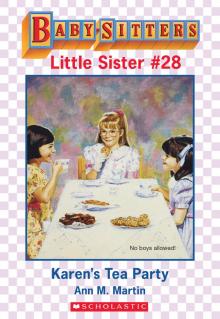 Karen's Tea Party
Karen's Tea Party Kristy and the Snobs
Kristy and the Snobs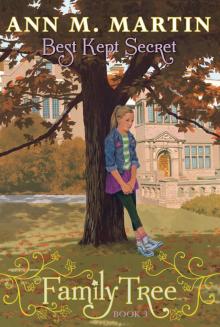 Best Kept Secret
Best Kept Secret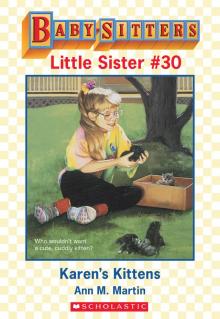 Karen's Kittens
Karen's Kittens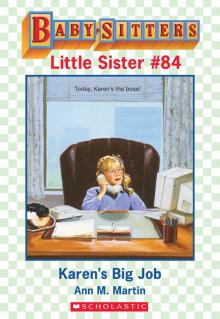 Karen's Big Job
Karen's Big Job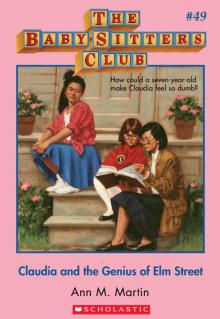 Claudia and the Genius of Elm Street
Claudia and the Genius of Elm Street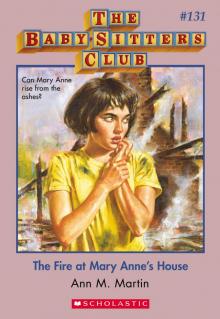 The Fire at Mary Anne's House
The Fire at Mary Anne's House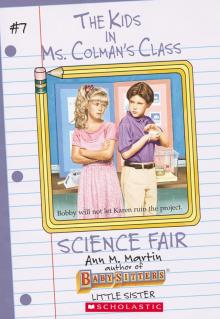 Science Fair
Science Fair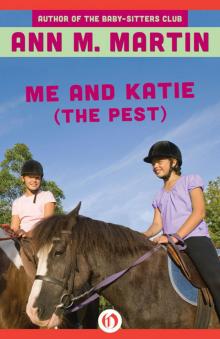 Me and Katie (The Pest)
Me and Katie (The Pest)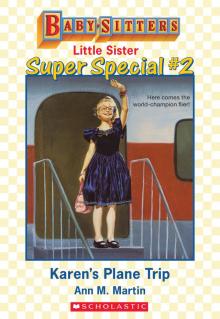 Karen's Plane Trip
Karen's Plane Trip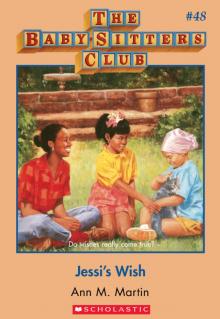 Jessi's Wish
Jessi's Wish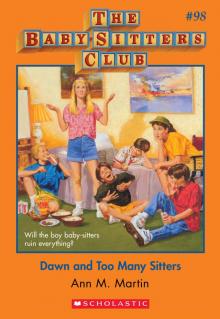 Dawn and Too Many Sitters
Dawn and Too Many Sitters Jessi and the Jewel Thieves
Jessi and the Jewel Thieves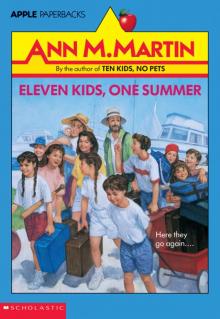 Eleven Kids, One Summer
Eleven Kids, One Summer Karen's Goldfish
Karen's Goldfish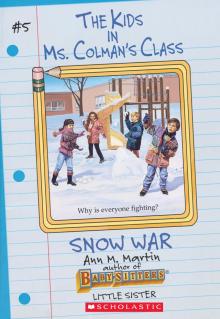 Snow War
Snow War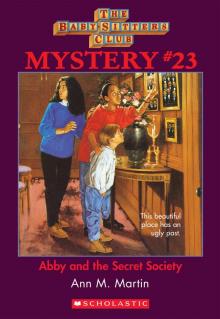 Abby and the Secret Society
Abby and the Secret Society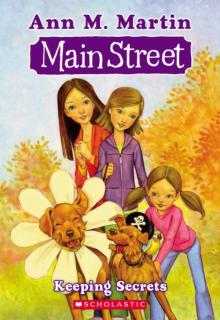 Keeping Secrets
Keeping Secrets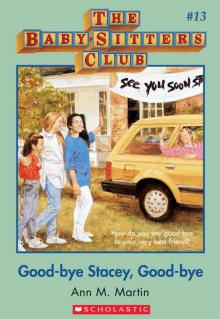 Good-Bye Stacey, Good-Bye
Good-Bye Stacey, Good-Bye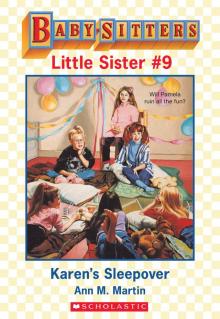 Karen's Sleepover
Karen's Sleepover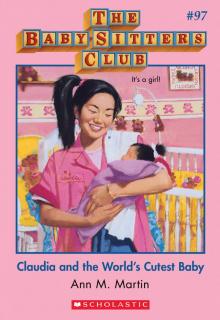 Claudia and the World's Cutest Baby
Claudia and the World's Cutest Baby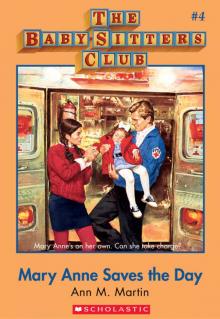 Mary Anne Saves the Day
Mary Anne Saves the Day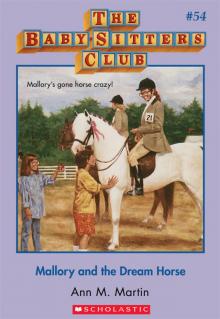 Mallory and the Dream Horse
Mallory and the Dream Horse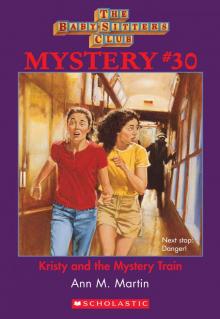 Kristy and the Mystery Train
Kristy and the Mystery Train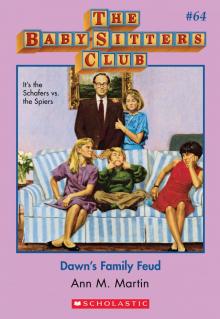 Dawn's Family Feud
Dawn's Family Feud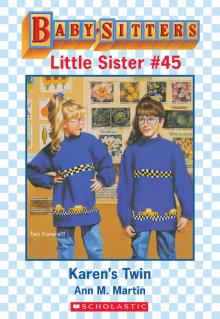 Karen's Twin
Karen's Twin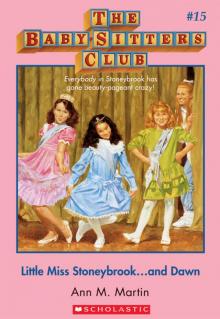 Little Miss Stoneybrook... And Dawn
Little Miss Stoneybrook... And Dawn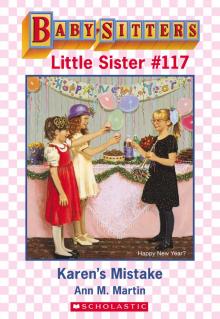 Karen's Mistake
Karen's Mistake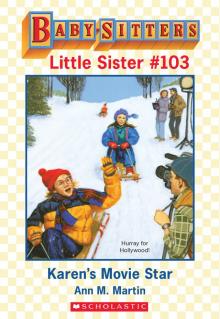 Karen's Movie Star
Karen's Movie Star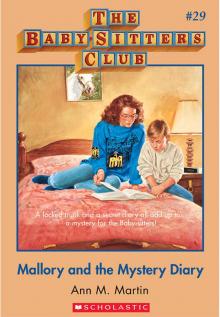 Mallory and the Mystery Diary
Mallory and the Mystery Diary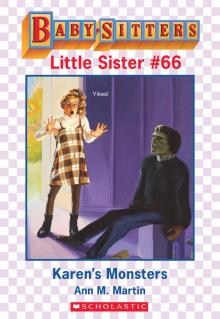 Karen's Monsters
Karen's Monsters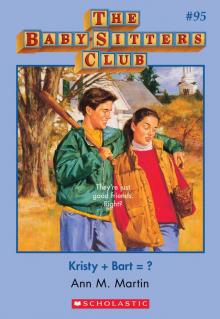 Kristy + Bart = ?
Kristy + Bart = ?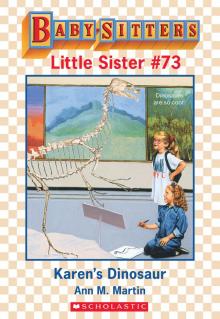 Karen's Dinosaur
Karen's Dinosaur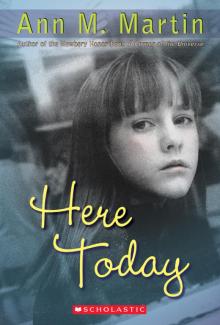 Here Today
Here Today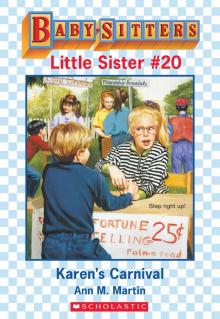 Karen's Carnival
Karen's Carnival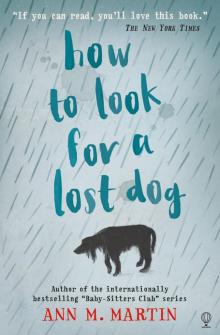 How to Look for a Lost Dog
How to Look for a Lost Dog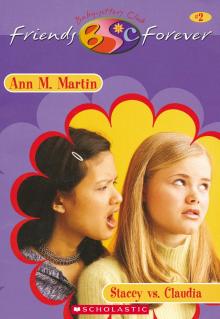 Stacey vs. Claudia
Stacey vs. Claudia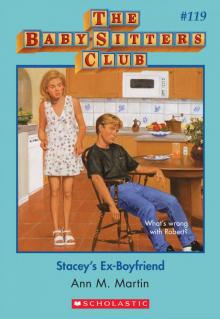 Stacey's Ex-Boyfriend
Stacey's Ex-Boyfriend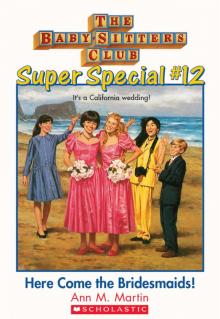 Here Come the Bridesmaids!
Here Come the Bridesmaids!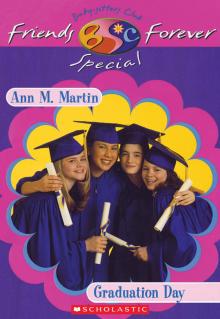 Graduation Day
Graduation Day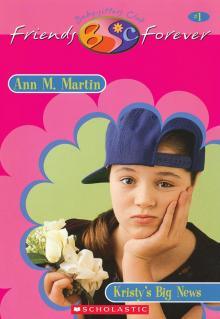 Kristy's Big News
Kristy's Big News Karen's School Surprise
Karen's School Surprise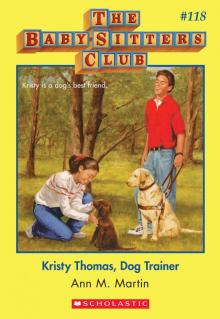 Kristy Thomas, Dog Trainer
Kristy Thomas, Dog Trainer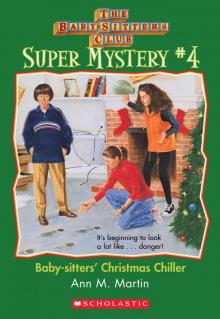 Baby-Sitters' Christmas Chiller
Baby-Sitters' Christmas Chiller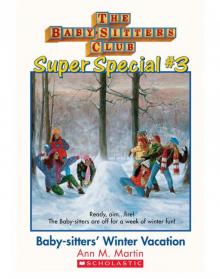 Baby-Sitters' Winter Vacation
Baby-Sitters' Winter Vacation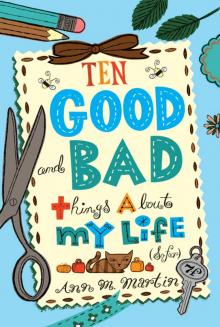 Ten Good and Bad Things About My Life
Ten Good and Bad Things About My Life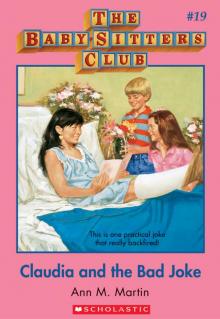 Claudia and the Bad Joke
Claudia and the Bad Joke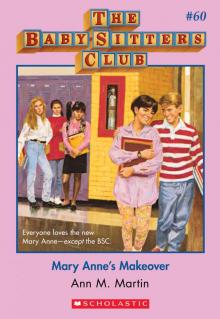 Mary Anne's Makeover
Mary Anne's Makeover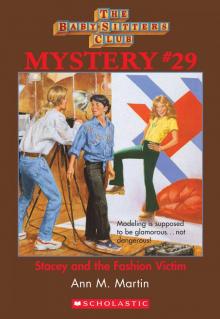 Stacey and the Fashion Victim
Stacey and the Fashion Victim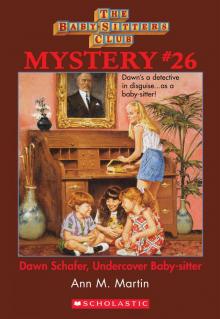 Dawn Schafer, Undercover Baby-Sitter
Dawn Schafer, Undercover Baby-Sitter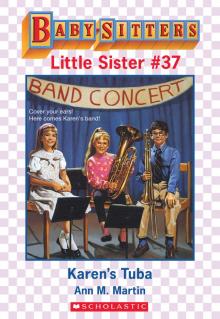 Karen's Tuba
Karen's Tuba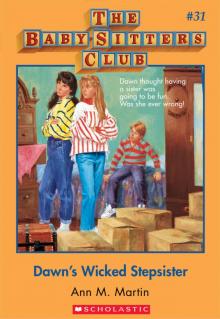 Dawn's Wicked Stepsister
Dawn's Wicked Stepsister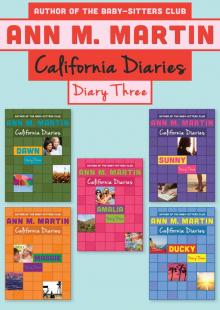 Diary Three: Dawn, Sunny, Maggie, Amalia, and Ducky
Diary Three: Dawn, Sunny, Maggie, Amalia, and Ducky Karen's Nanny
Karen's Nanny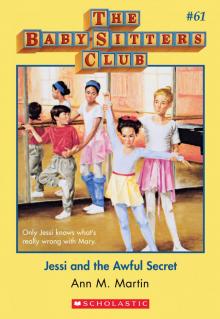 Jessi and the Awful Secret
Jessi and the Awful Secret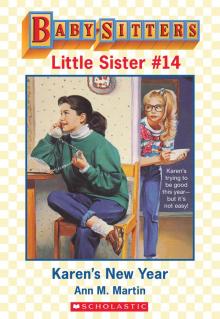 Karen's New Year
Karen's New Year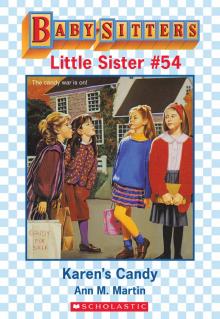 Karen's Candy
Karen's Candy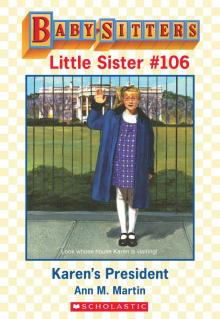 Karen's President
Karen's President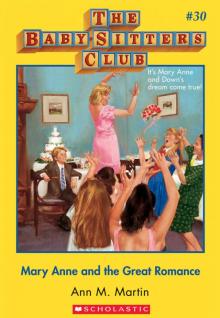 Mary Anne and the Great Romance
Mary Anne and the Great Romance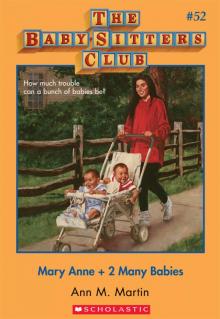 Mary Anne + 2 Many Babies
Mary Anne + 2 Many Babies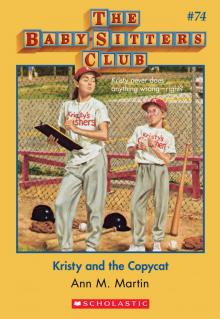 Kristy and the Copycat
Kristy and the Copycat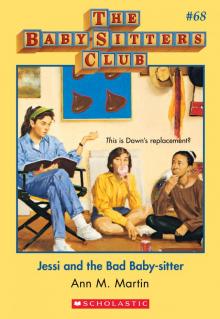 Jessi and the Bad Baby-Sitter
Jessi and the Bad Baby-Sitter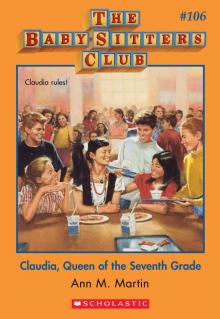 Claudia, Queen of the Seventh Grade
Claudia, Queen of the Seventh Grade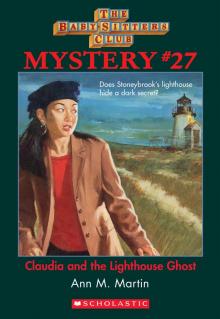 Claudia and the Lighthouse Ghost
Claudia and the Lighthouse Ghost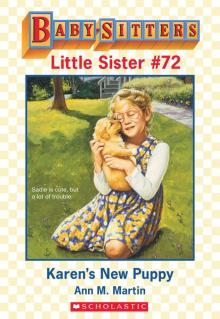 Karen's New Puppy
Karen's New Puppy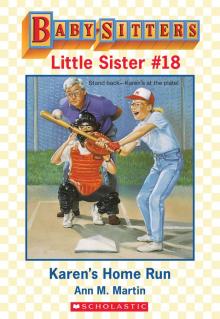 Karen's Home Run
Karen's Home Run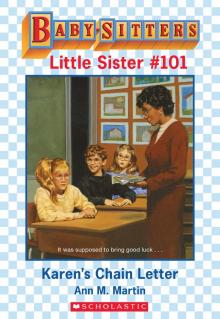 Karen's Chain Letter
Karen's Chain Letter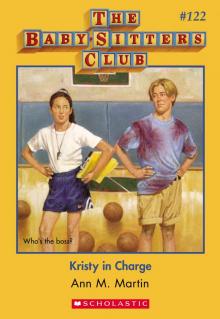 Kristy in Charge
Kristy in Charge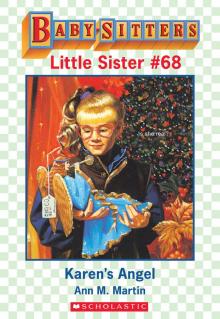 Karen's Angel
Karen's Angel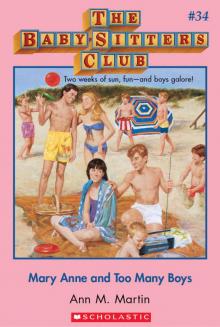 Mary Anne and Too Many Boys
Mary Anne and Too Many Boys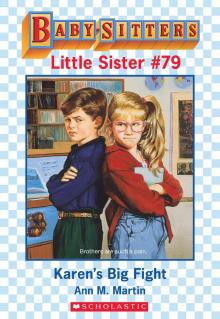 Karen's Big Fight
Karen's Big Fight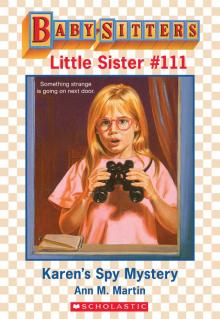 Karen's Spy Mystery
Karen's Spy Mystery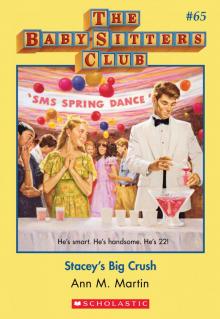 Stacey's Big Crush
Stacey's Big Crush Karen's School
Karen's School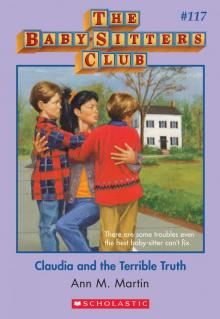 Claudia and the Terrible Truth
Claudia and the Terrible Truth Karen's Cowboy
Karen's Cowboy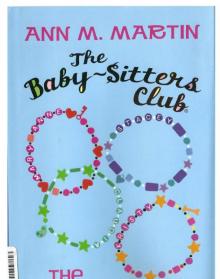 The Summer Before
The Summer Before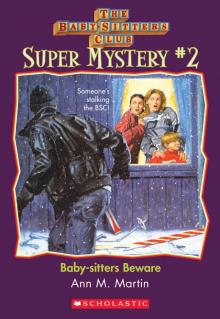 Beware, Dawn!
Beware, Dawn!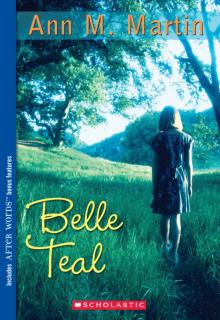 Belle Teale
Belle Teale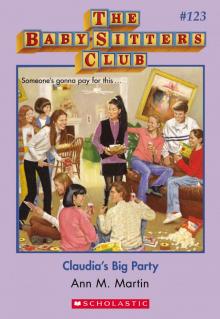 Claudia's Big Party
Claudia's Big Party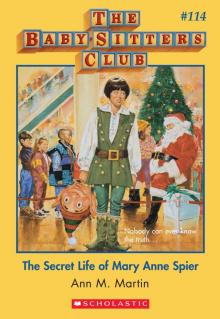 The Secret Life of Mary Anne Spier
The Secret Life of Mary Anne Spier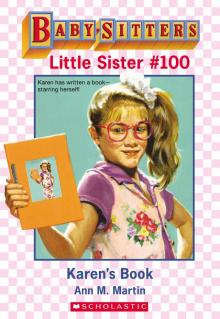 Karen's Book
Karen's Book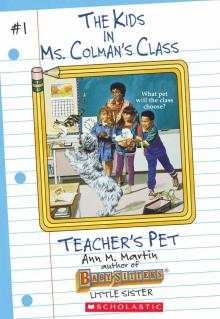 Teacher's Pet
Teacher's Pet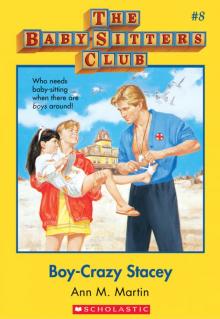 Boy-Crazy Stacey
Boy-Crazy Stacey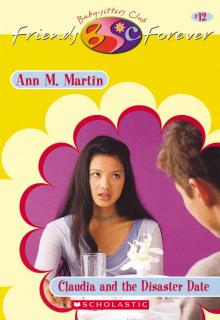 Claudia and the Disaster Date
Claudia and the Disaster Date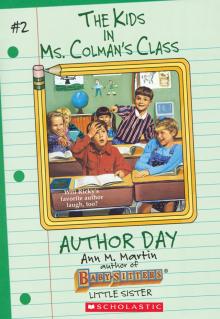 Author Day
Author Day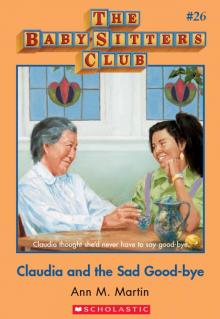 Claudia and the Sad Good-Bye
Claudia and the Sad Good-Bye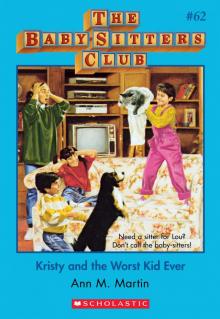 Kristy and the Worst Kid Ever
Kristy and the Worst Kid Ever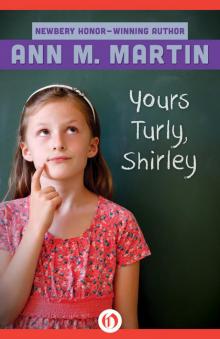 Yours Turly, Shirley
Yours Turly, Shirley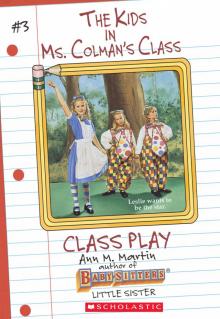 Class Play
Class Play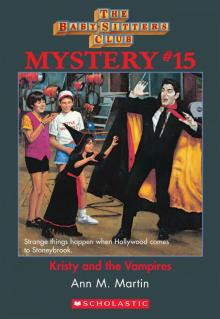 Kristy and the Vampires
Kristy and the Vampires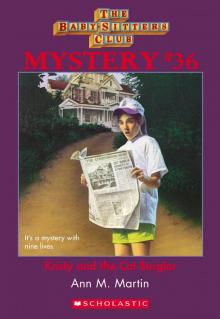 Kristy and the Cat Burglar
Kristy and the Cat Burglar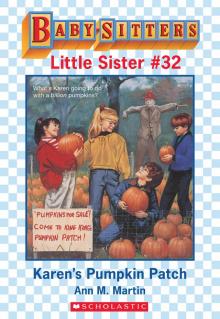 Karen's Pumpkin Patch
Karen's Pumpkin Patch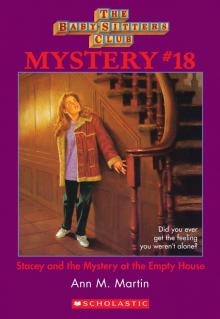 Stacey and the Mystery at the Empty House
Stacey and the Mystery at the Empty House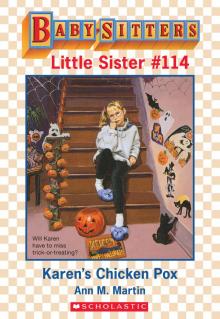 Karen's Chicken Pox
Karen's Chicken Pox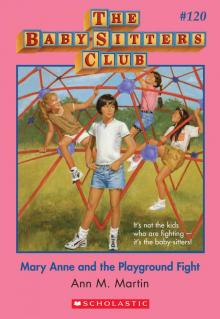 Mary Anne and the Playground Fight
Mary Anne and the Playground Fight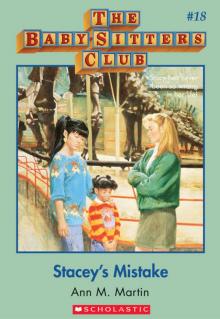 Stacey's Mistake
Stacey's Mistake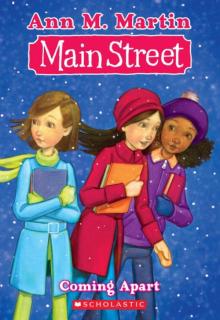 Coming Apart
Coming Apart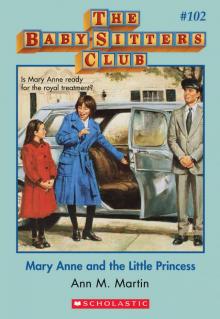 Mary Anne and the Little Princess
Mary Anne and the Little Princess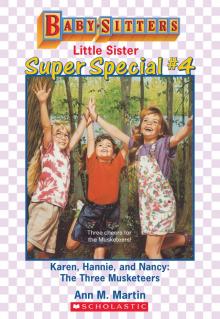 Karen, Hannie and Nancy: The Three Musketeers
Karen, Hannie and Nancy: The Three Musketeers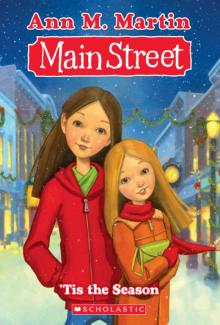 'Tis the Season
'Tis the Season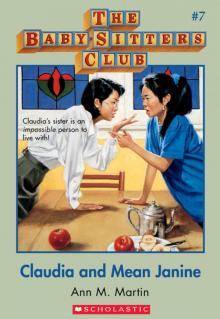 Claudia and Mean Janine
Claudia and Mean Janine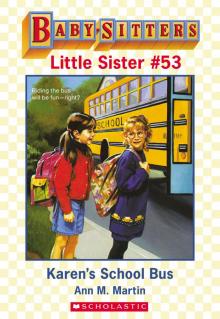 Karen's School Bus
Karen's School Bus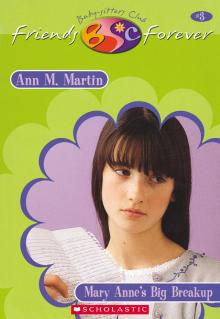 Mary Anne's Big Breakup
Mary Anne's Big Breakup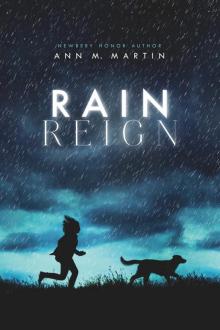 Rain Reign
Rain Reign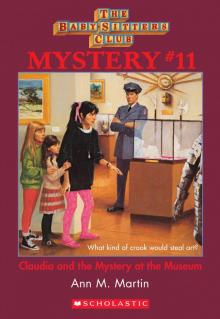 Claudia and the Mystery at the Museum
Claudia and the Mystery at the Museum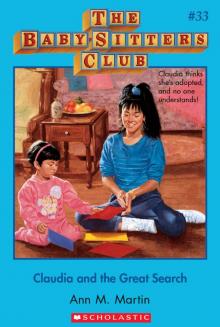 Claudia and the Great Search
Claudia and the Great Search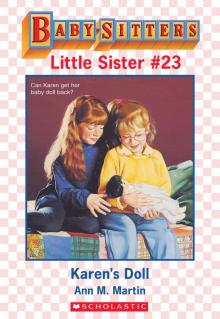 Karen's Doll
Karen's Doll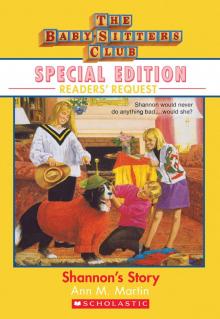 Shannon's Story
Shannon's Story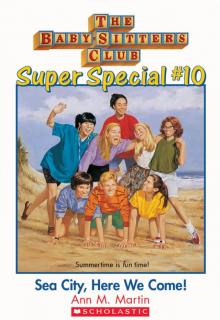 Sea City, Here We Come!
Sea City, Here We Come!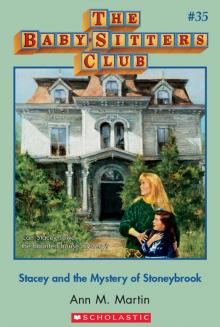 Stacey and the Mystery of Stoneybrook
Stacey and the Mystery of Stoneybrook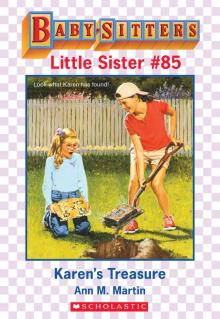 Karen's Treasure
Karen's Treasure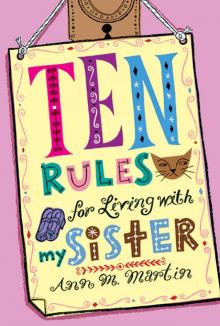 Ten Rules for Living With My Sister
Ten Rules for Living With My Sister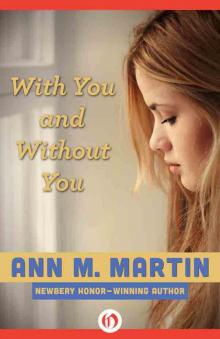 With You and Without You
With You and Without You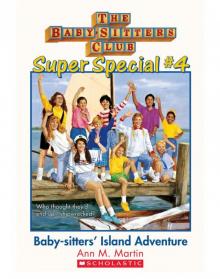 Baby-Sitters' Island Adventure
Baby-Sitters' Island Adventure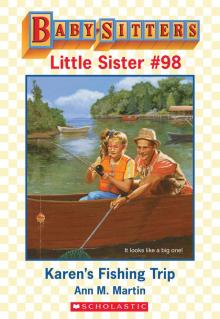 Karen's Fishing Trip
Karen's Fishing Trip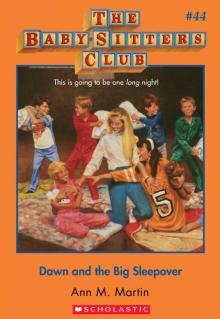 Dawn and the Big Sleepover
Dawn and the Big Sleepover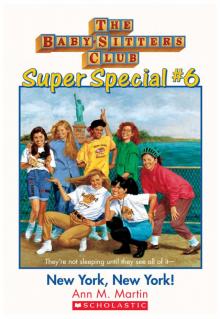 New York, New York!
New York, New York!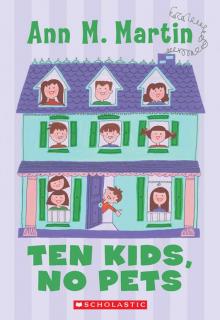 Ten Kids, No Pets
Ten Kids, No Pets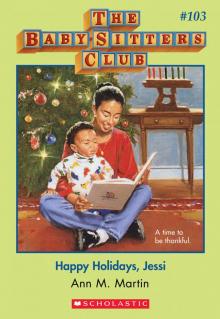 Happy Holidays, Jessi
Happy Holidays, Jessi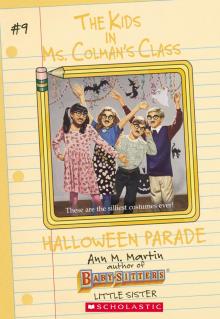 Halloween Parade
Halloween Parade Karen's New Holiday
Karen's New Holiday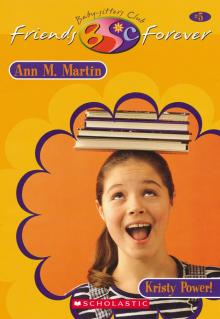 Kristy Power!
Kristy Power!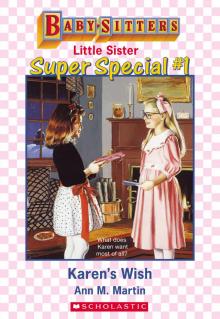 Karen's Wish
Karen's Wish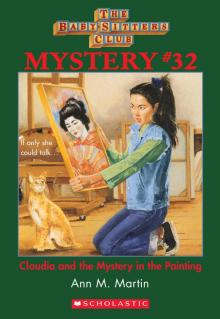 Claudia and the Mystery in the Painting
Claudia and the Mystery in the Painting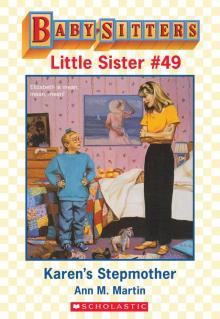 Karen's Stepmother
Karen's Stepmother Abby in Wonderland
Abby in Wonderland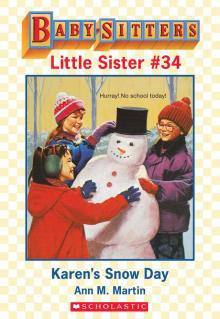 Karen's Snow Day
Karen's Snow Day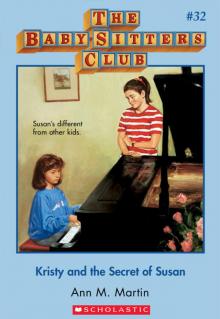 Kristy and the Secret of Susan
Kristy and the Secret of Susan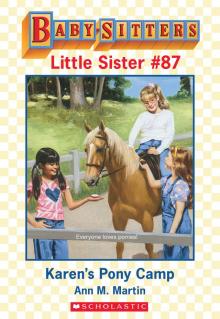 Karen's Pony Camp
Karen's Pony Camp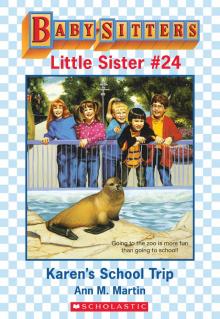 Karen's School Trip
Karen's School Trip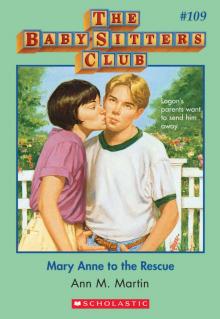 Mary Anne to the Rescue
Mary Anne to the Rescue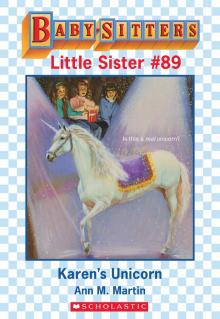 Karen's Unicorn
Karen's Unicorn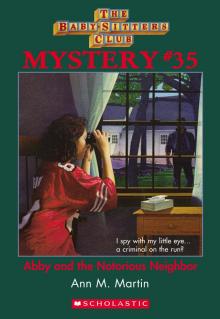 Abby and the Notorious Neighbor
Abby and the Notorious Neighbor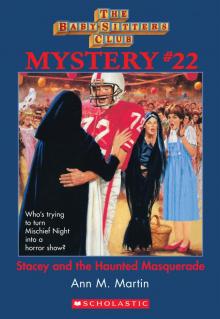 Stacey and the Haunted Masquerade
Stacey and the Haunted Masquerade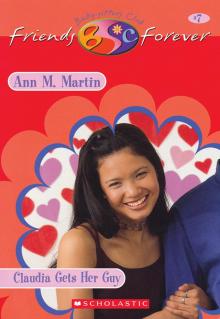 Claudia Gets Her Guy
Claudia Gets Her Guy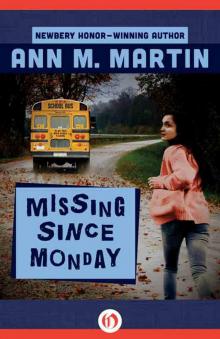 Missing Since Monday
Missing Since Monday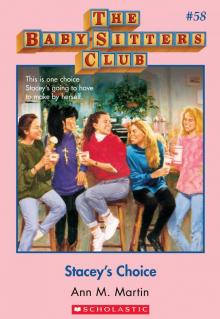 Stacey's Choice
Stacey's Choice Stacey's Ex-Best Friend
Stacey's Ex-Best Friend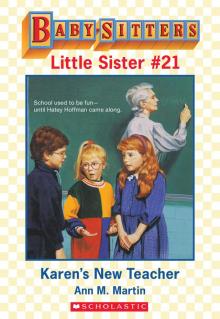 Karen's New Teacher
Karen's New Teacher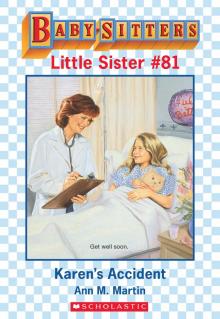 Karen's Accident
Karen's Accident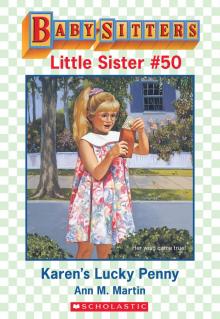 Karen's Lucky Penny
Karen's Lucky Penny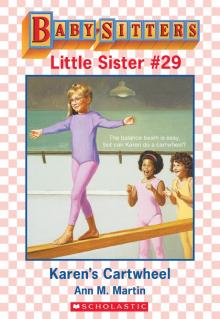 Karen's Cartwheel
Karen's Cartwheel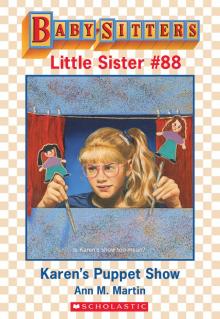 Karen's Puppet Show
Karen's Puppet Show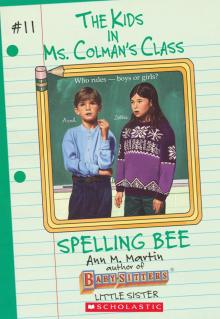 Spelling Bee
Spelling Bee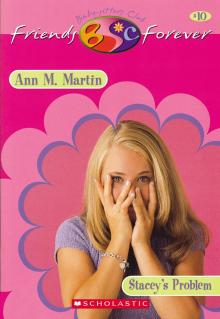 Stacey's Problem
Stacey's Problem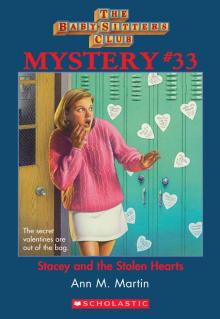 Stacey and the Stolen Hearts
Stacey and the Stolen Hearts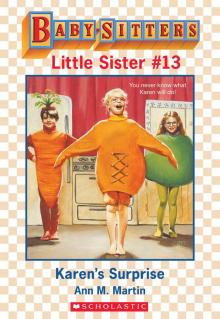 Karen's Surprise
Karen's Surprise Karen's Worst Day
Karen's Worst Day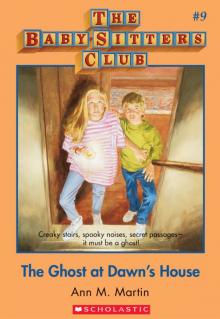 The Ghost at Dawn's House
The Ghost at Dawn's House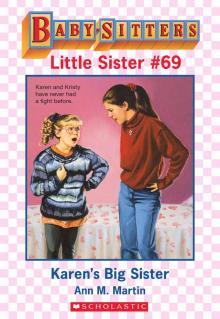 Karen's Big Sister
Karen's Big Sister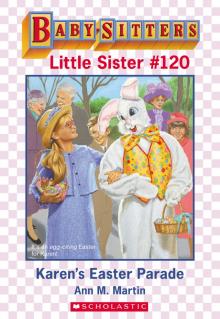 Karen's Easter Parade
Karen's Easter Parade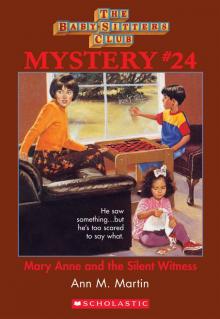 Mary Anne and the Silent Witness
Mary Anne and the Silent Witness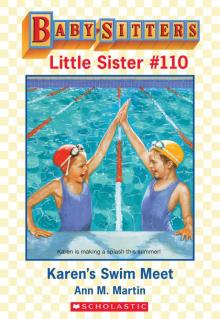 Karen's Swim Meet
Karen's Swim Meet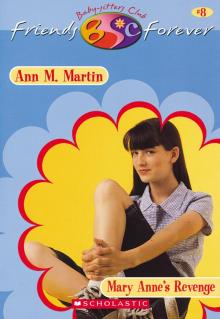 Mary Anne's Revenge
Mary Anne's Revenge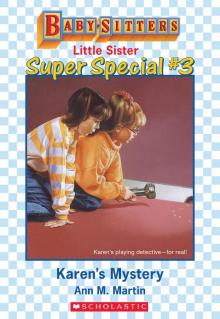 Karen's Mystery
Karen's Mystery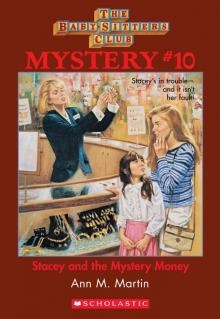 Stacey and the Mystery Money
Stacey and the Mystery Money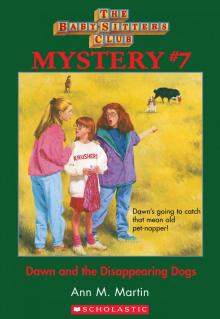 Dawn and the Disappearing Dogs
Dawn and the Disappearing Dogs Karen's Christmas Tree
Karen's Christmas Tree Welcome to Camden Falls
Welcome to Camden Falls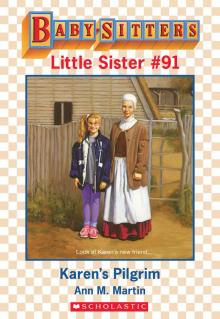 Karen's Pilgrim
Karen's Pilgrim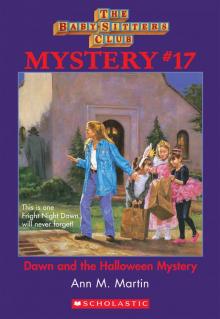 Dawn and the Halloween Mystery
Dawn and the Halloween Mystery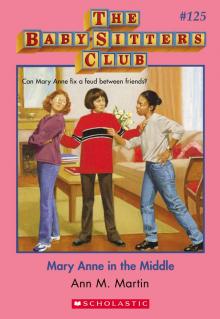 Mary Anne in the Middle
Mary Anne in the Middle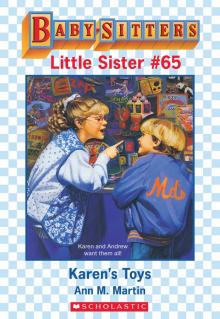 Karen's Toys
Karen's Toys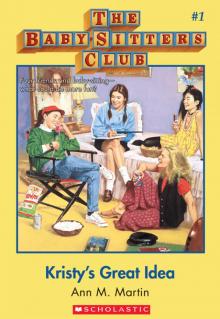 Kristy's Great Idea
Kristy's Great Idea Claudia and the Middle School Mystery
Claudia and the Middle School Mystery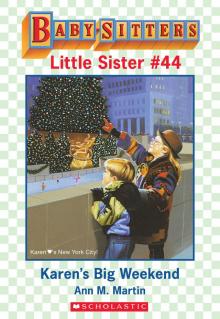 Karen's Big Weekend
Karen's Big Weekend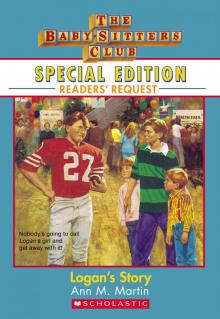 Logan's Story
Logan's Story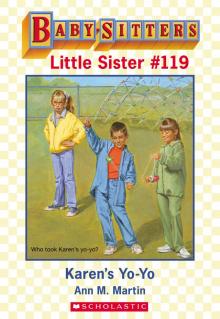 Karen's Yo-Yo
Karen's Yo-Yo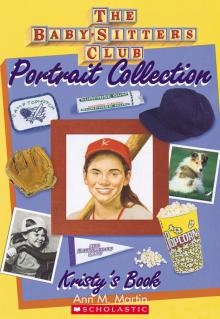 Kristy's Book
Kristy's Book Mallory and the Ghost Cat
Mallory and the Ghost Cat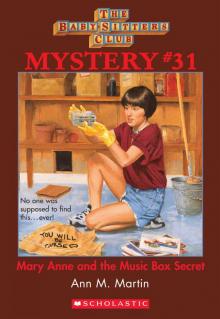 Mary Anne and the Music
Mary Anne and the Music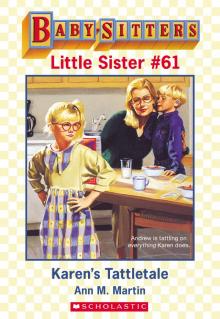 Karen's Tattletale
Karen's Tattletale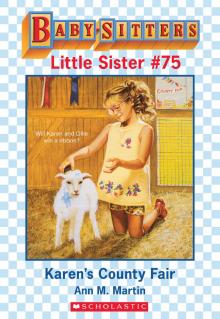 Karen's County Fair
Karen's County Fair Karen's Mermaid
Karen's Mermaid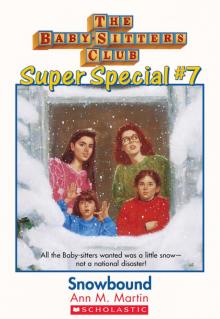 Snowbound
Snowbound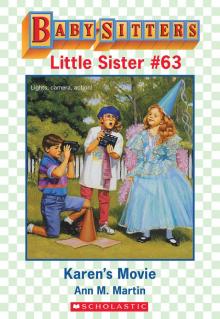 Karen's Movie
Karen's Movie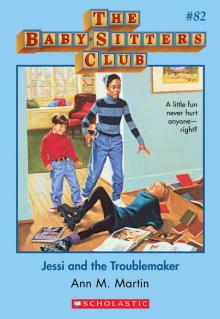 Jessi and the Troublemaker
Jessi and the Troublemaker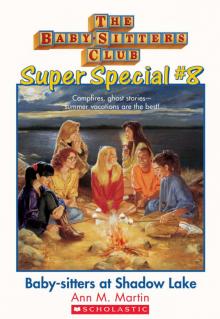 Baby-Sitters at Shadow Lake
Baby-Sitters at Shadow Lake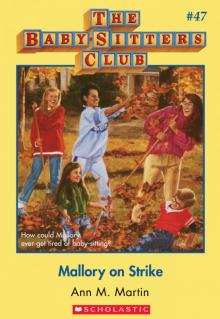 Mallory on Strike
Mallory on Strike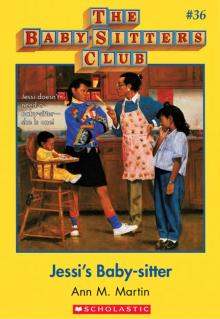 Jessi's Baby-Sitter
Jessi's Baby-Sitter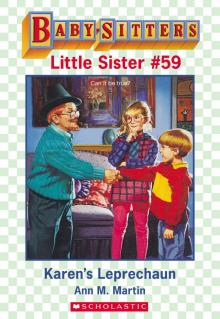 Karen's Leprechaun
Karen's Leprechaun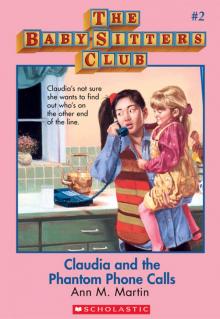 Claudia and the Phantom Phone Calls
Claudia and the Phantom Phone Calls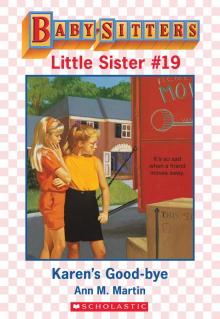 Karen's Good-Bye
Karen's Good-Bye Karen's Figure Eight
Karen's Figure Eight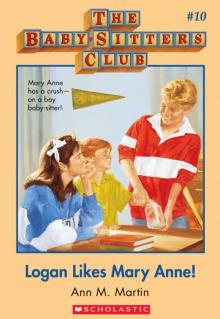 Logan Likes Mary Anne!
Logan Likes Mary Anne!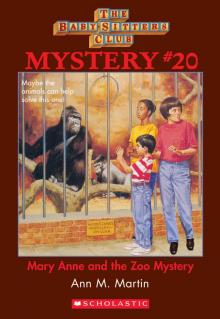 Mary Anne and the Zoo Mystery
Mary Anne and the Zoo Mystery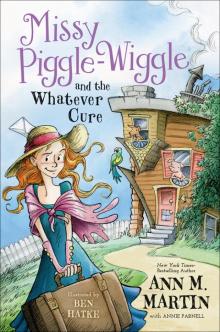 Missy Piggle-Wiggle and the Whatever Cure
Missy Piggle-Wiggle and the Whatever Cure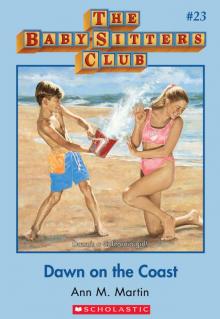 Dawn on the Coast
Dawn on the Coast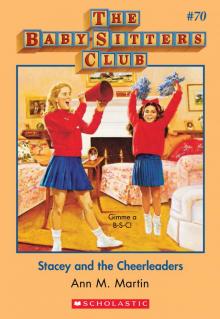 Stacey and the Cheerleaders
Stacey and the Cheerleaders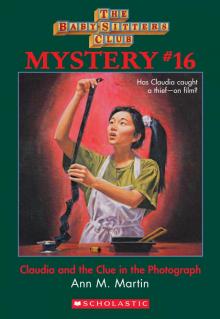 Claudia and the Clue in the Photograph
Claudia and the Clue in the Photograph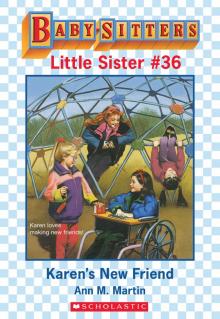 Karen's New Friend
Karen's New Friend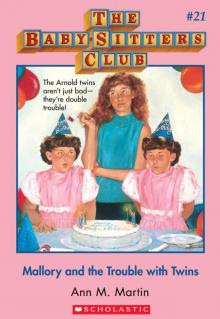 Mallory and the Trouble With Twins
Mallory and the Trouble With Twins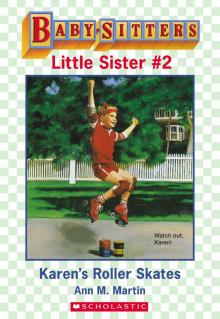 Karen's Roller Skates
Karen's Roller Skates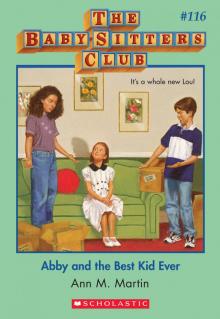 Abby and the Best Kid Ever
Abby and the Best Kid Ever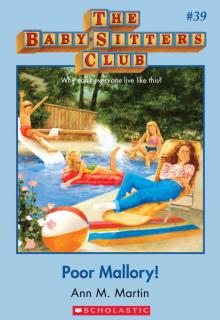 Poor Mallory!
Poor Mallory!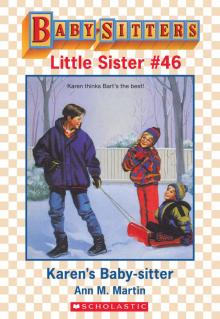 Karen's Witch
Karen's Witch Karen's Grandmothers
Karen's Grandmothers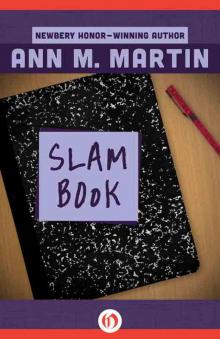 Slam Book
Slam Book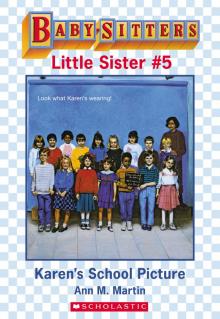 Karen's School Picture
Karen's School Picture Karen's Reindeer
Karen's Reindeer Kristy's Big Day
Kristy's Big Day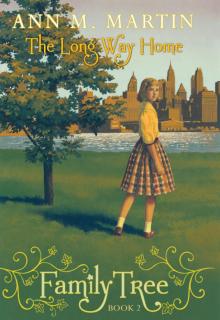 The Long Way Home
The Long Way Home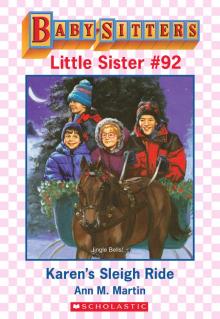 Karen's Sleigh Ride
Karen's Sleigh Ride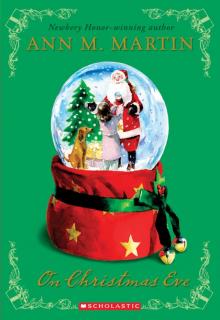 On Christmas Eve
On Christmas Eve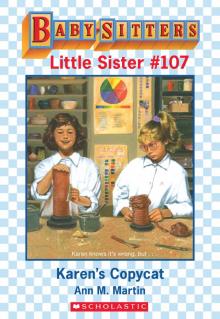 Karen's Copycat
Karen's Copycat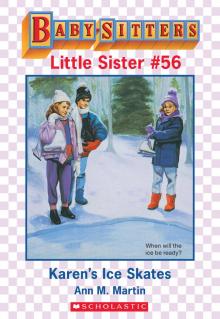 Karen's Ice Skates
Karen's Ice Skates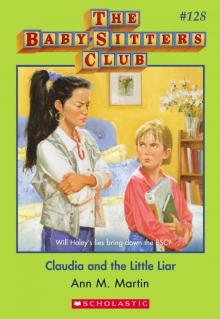 Claudia and the Little Liar
Claudia and the Little Liar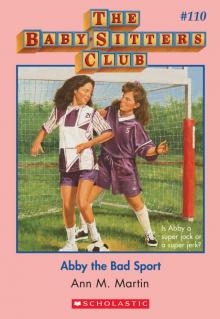 Abby the Bad Sport
Abby the Bad Sport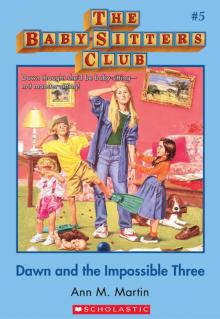 The Baby-Sitters Club #5: Dawn and the Impossible Three
The Baby-Sitters Club #5: Dawn and the Impossible Three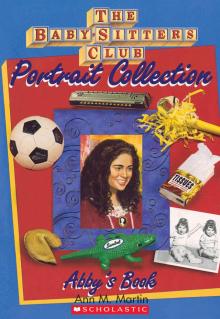 Abby's Book
Abby's Book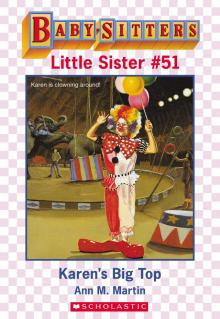 Karen's Big Top
Karen's Big Top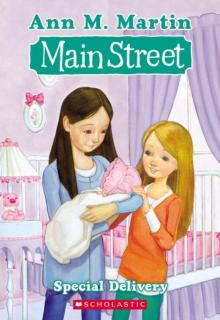 Main Street #8: Special Delivery
Main Street #8: Special Delivery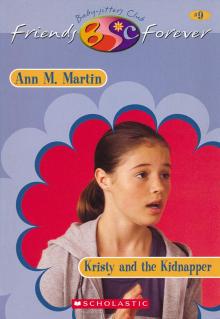 Kristy and the Kidnapper
Kristy and the Kidnapper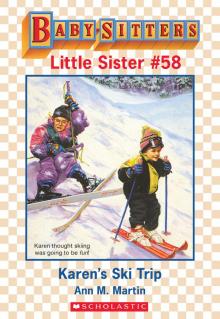 Karen's Ski Trip
Karen's Ski Trip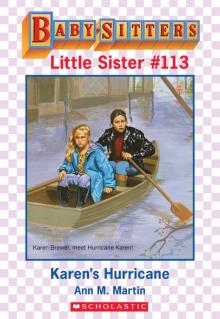 Karen's Hurricane
Karen's Hurricane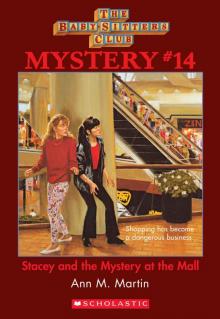 Stacey and the Mystery at the Mall
Stacey and the Mystery at the Mall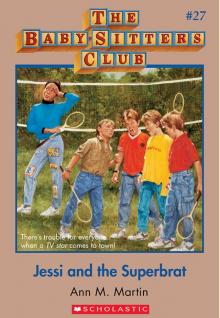 Jessi and the Superbrat
Jessi and the Superbrat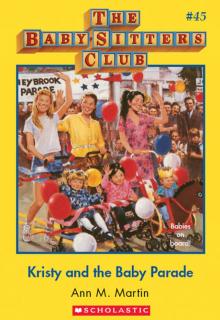 Kristy and the Baby Parade
Kristy and the Baby Parade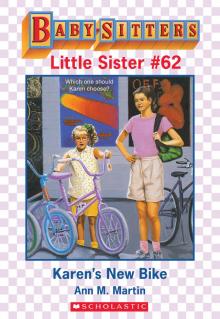 Karen's New Bike
Karen's New Bike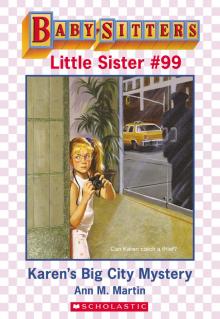 Karen's Big City Mystery
Karen's Big City Mystery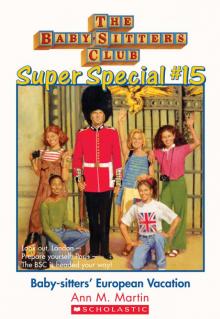 Baby-Sitters' European Vacation
Baby-Sitters' European Vacation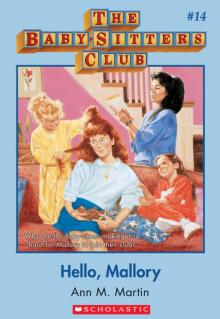 Hello, Mallory
Hello, Mallory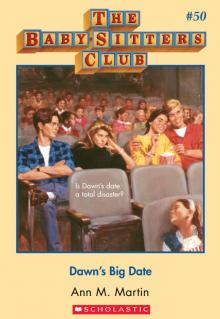 Dawn's Big Date
Dawn's Big Date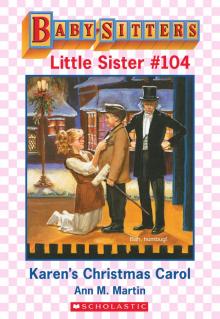 Karen's Christmas Carol
Karen's Christmas Carol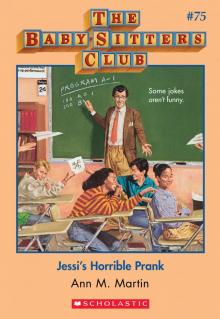 Jessi's Horrible Prank
Jessi's Horrible Prank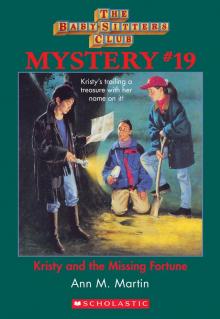 Kristy and the Missing Fortune
Kristy and the Missing Fortune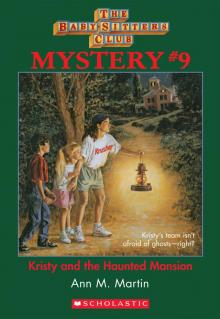 Kristy and the Haunted Mansion
Kristy and the Haunted Mansion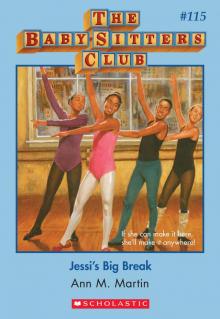 Jessi's Big Break
Jessi's Big Break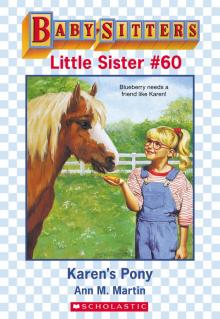 Karen's Pony
Karen's Pony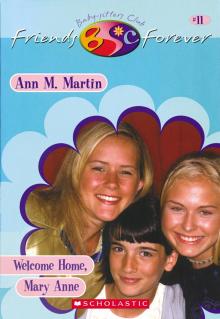 Welcome Home, Mary Anne
Welcome Home, Mary Anne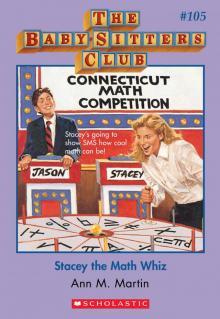 Stacey the Math Whiz
Stacey the Math Whiz September Surprises
September Surprises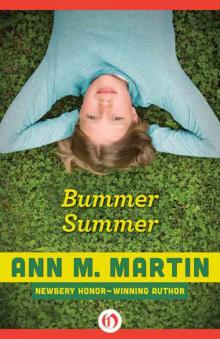 Bummer Summer
Bummer Summer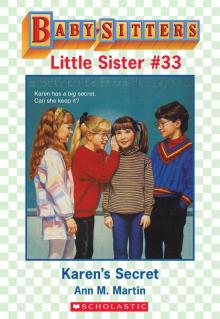 Karen's Secret
Karen's Secret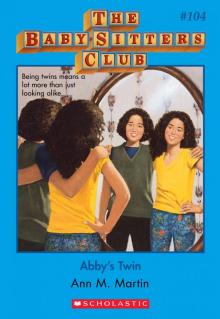 Abby's Twin
Abby's Twin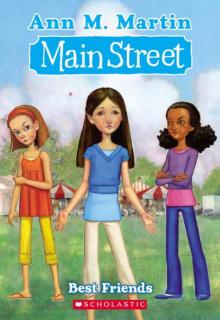 Main Street #4: Best Friends
Main Street #4: Best Friends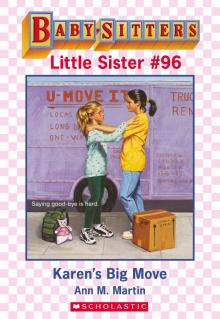 Karen's Big Move
Karen's Big Move Mary Anne Misses Logan
Mary Anne Misses Logan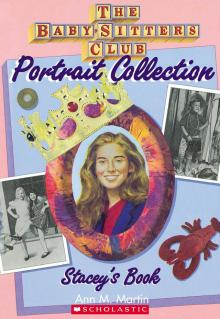 Stacey's Book
Stacey's Book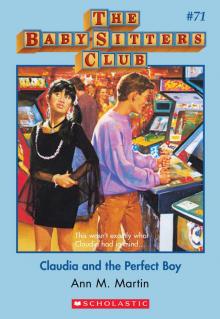 Claudia and the Perfect Boy
Claudia and the Perfect Boy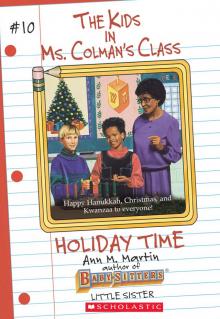 Holiday Time
Holiday Time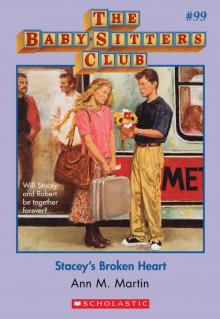 Stacey's Broken Heart
Stacey's Broken Heart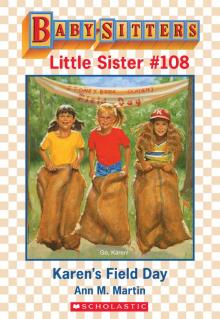 Karen's Field Day
Karen's Field Day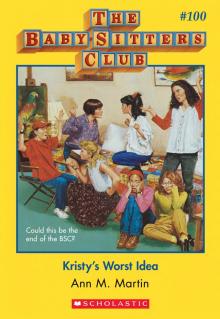 Kristy's Worst Idea
Kristy's Worst Idea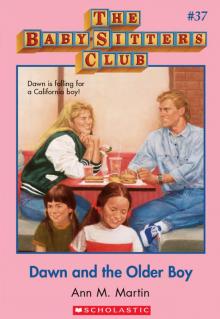 Dawn and the Older Boy
Dawn and the Older Boy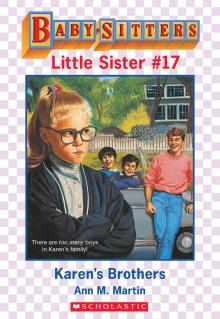 Karen's Brothers
Karen's Brothers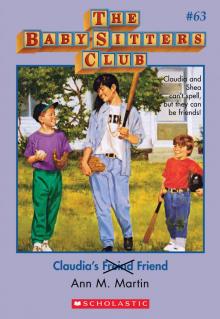 Claudia's Friend
Claudia's Friend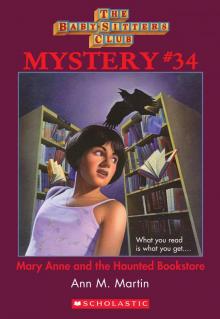 Mary Anne and the Haunted Bookstore
Mary Anne and the Haunted Bookstore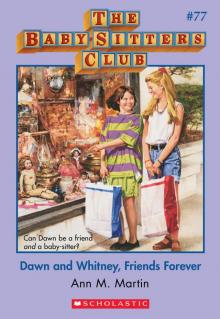 Dawn and Whitney, Friends Forever
Dawn and Whitney, Friends Forever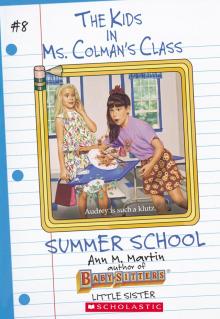 Summer School
Summer School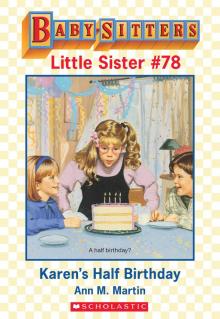 Karen's Birthday
Karen's Birthday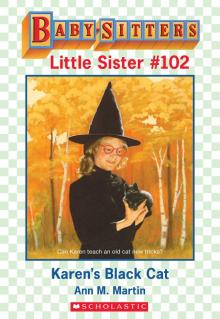 Karen's Black Cat
Karen's Black Cat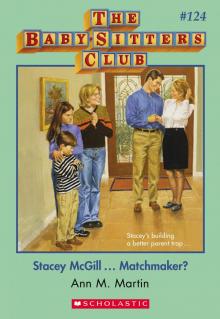 Stacey McGill... Matchmaker?
Stacey McGill... Matchmaker?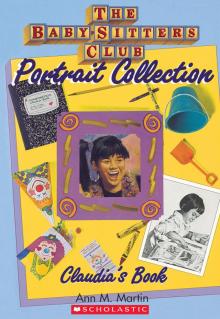 Claudia's Book
Claudia's Book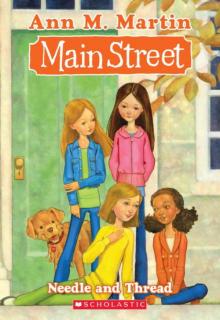 Main Street #2: Needle and Thread
Main Street #2: Needle and Thread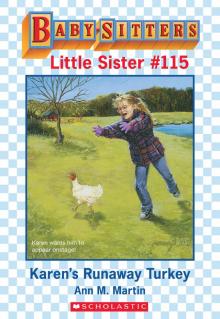 Karen's Runaway Turkey
Karen's Runaway Turkey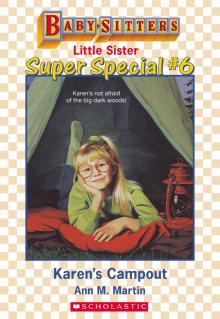 Karen's Campout
Karen's Campout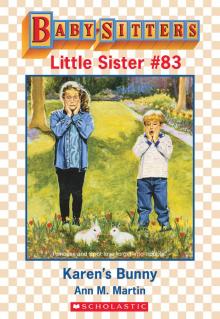 Karen's Bunny
Karen's Bunny Claudia and the New Girl
Claudia and the New Girl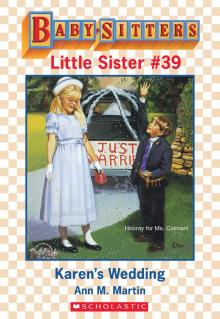 Karen's Wedding
Karen's Wedding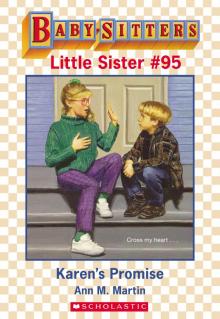 Karen's Promise
Karen's Promise Karen's Snow Princess
Karen's Snow Princess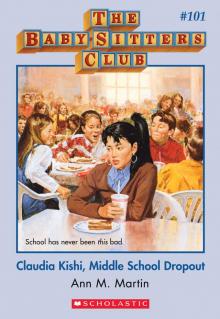 Claudia Kishi, Middle School Dropout
Claudia Kishi, Middle School Dropout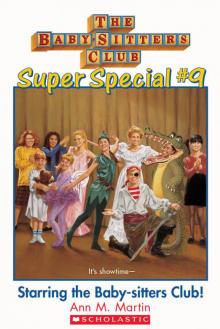 Starring the Baby-Sitters Club!
Starring the Baby-Sitters Club!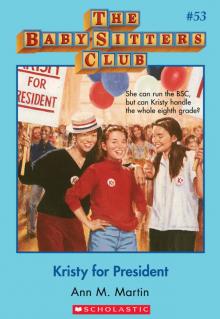 Kristy for President
Kristy for President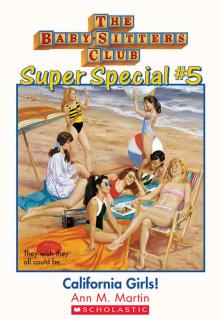 California Girls!
California Girls!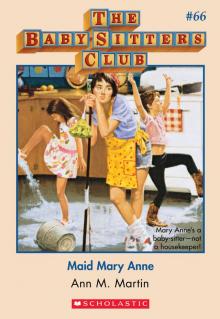 Maid Mary Anne
Maid Mary Anne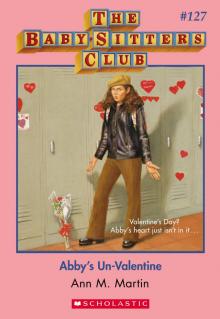 Abby's Un-Valentine
Abby's Un-Valentine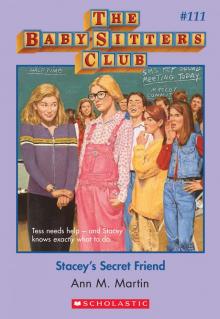 Stacey's Secret Friend
Stacey's Secret Friend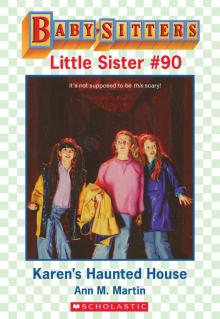 Karen's Haunted House
Karen's Haunted House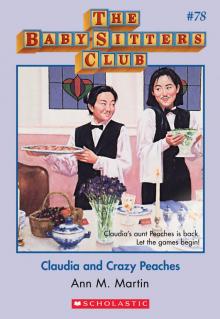 Claudia and Crazy Peaches
Claudia and Crazy Peaches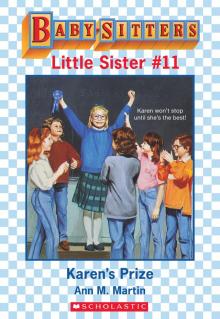 Karen's Prize
Karen's Prize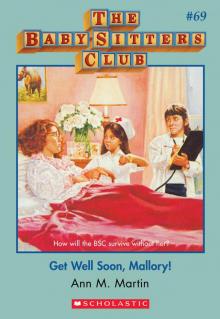 Get Well Soon, Mallory!
Get Well Soon, Mallory!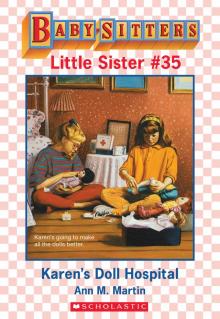 Karen's Doll Hospital
Karen's Doll Hospital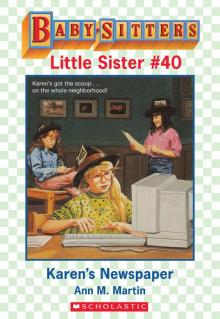 Karen's Newspaper
Karen's Newspaper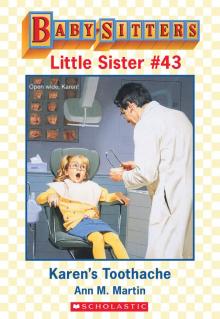 Karen's Toothache
Karen's Toothache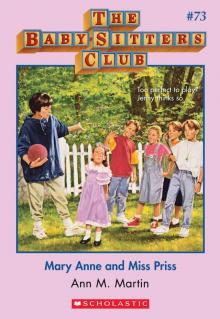 Mary Anne and Miss Priss
Mary Anne and Miss Priss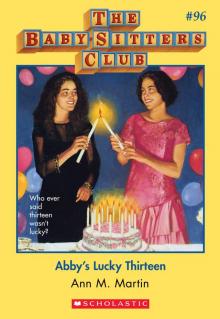 Abby's Lucky Thirteen
Abby's Lucky Thirteen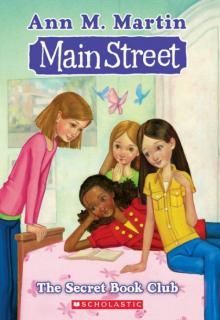 The Secret Book Club
The Secret Book Club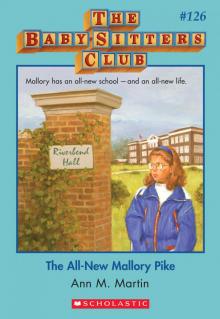 The All-New Mallory Pike
The All-New Mallory Pike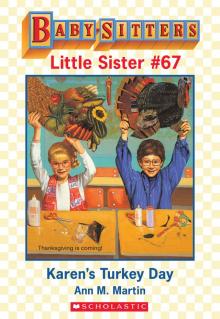 Karen's Turkey Day
Karen's Turkey Day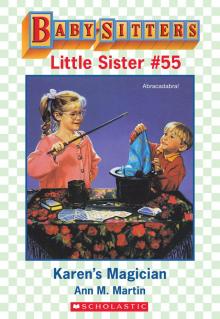 Karen's Magician
Karen's Magician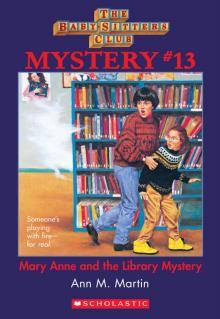 Mary Anne and the Library Mystery
Mary Anne and the Library Mystery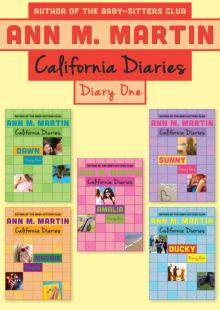 Diary One: Dawn, Sunny, Maggie, Amalia, and Ducky
Diary One: Dawn, Sunny, Maggie, Amalia, and Ducky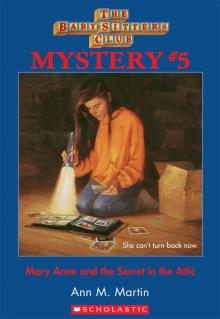 Mary Anne and the Secret in the Attic
Mary Anne and the Secret in the Attic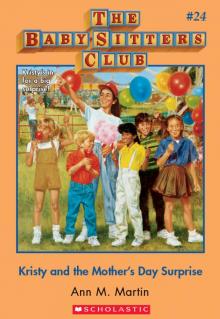 Kristy and the Mother's Day Surprise
Kristy and the Mother's Day Surprise Karen's in Love
Karen's in Love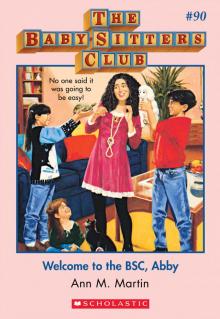 Welcome to the BSC, Abby
Welcome to the BSC, Abby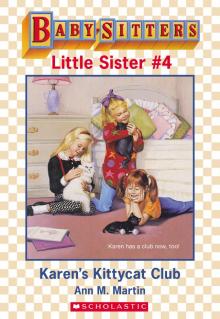 Karen's Kittycat Club
Karen's Kittycat Club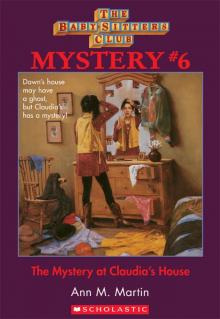 The Mystery at Claudia's House
The Mystery at Claudia's House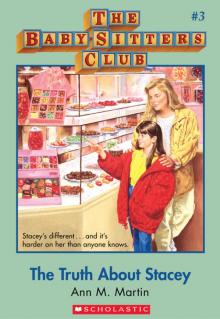 The Truth About Stacey
The Truth About Stacey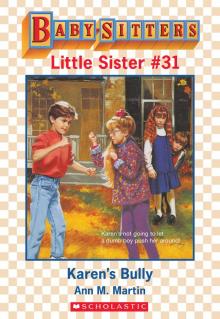 Karen's Bully
Karen's Bully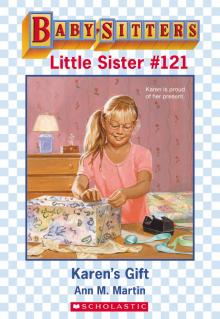 Karen's Gift
Karen's Gift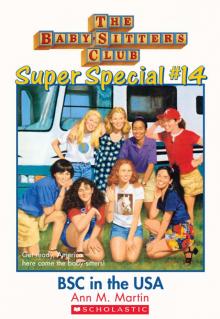 BSC in the USA
BSC in the USA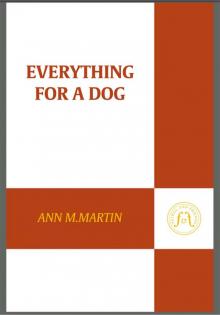 Everything for a Dog
Everything for a Dog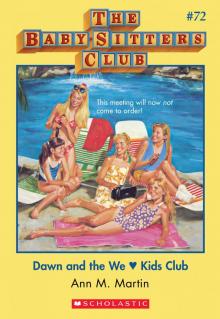 Dawn and the We Love Kids Club
Dawn and the We Love Kids Club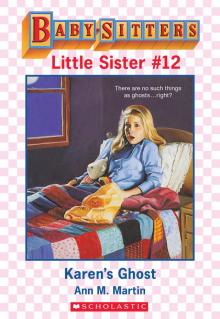 Karen's Ghost
Karen's Ghost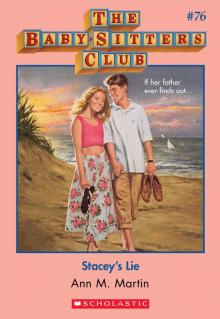 Stacey's Lie
Stacey's Lie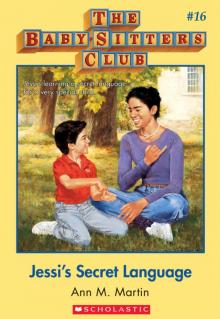 Jessi's Secret Language
Jessi's Secret Language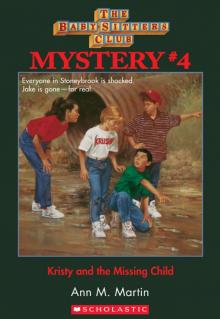 Kristy and the Missing Child
Kristy and the Missing Child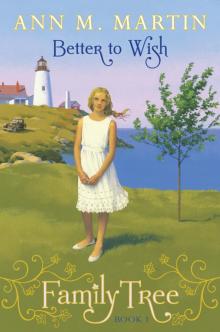 Better to Wish
Better to Wish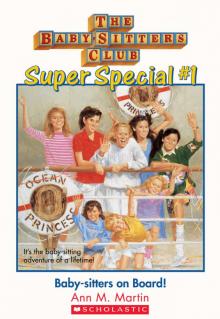 Baby-Sitters on Board!
Baby-Sitters on Board!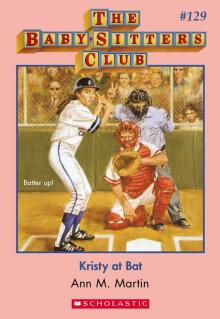 Kristy at Bat
Kristy at Bat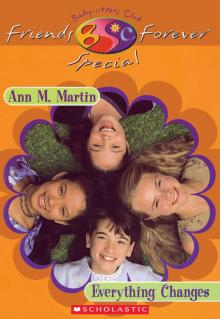 Everything Changes
Everything Changes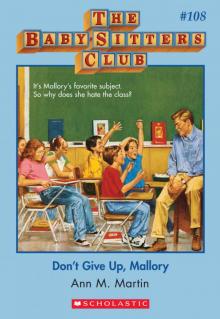 Don't Give Up, Mallory
Don't Give Up, Mallory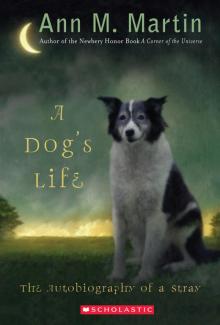 A Dog's Life: The Autobiography of a Stray
A Dog's Life: The Autobiography of a Stray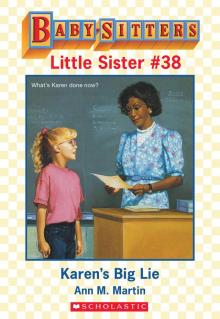 Karen's Big Lie
Karen's Big Lie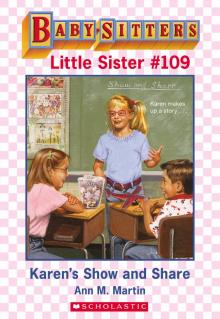 Karen's Show and Share
Karen's Show and Share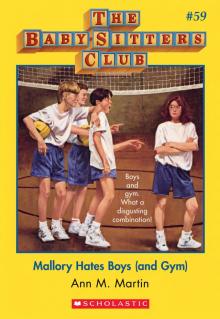 Mallory Hates Boys (and Gym)
Mallory Hates Boys (and Gym)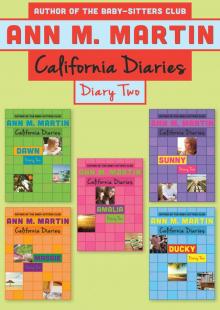 Diary Two: Dawn, Sunny, Maggie, Amalia, and Ducky
Diary Two: Dawn, Sunny, Maggie, Amalia, and Ducky Karen's Pen Pal
Karen's Pen Pal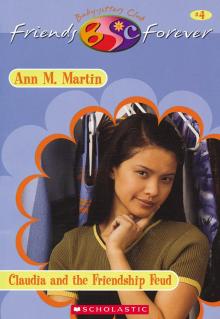 Claudia and the Friendship Feud
Claudia and the Friendship Feud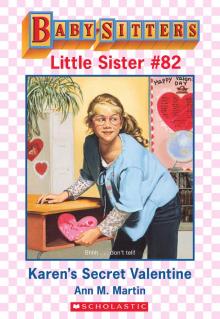 Karen's Secret Valentine
Karen's Secret Valentine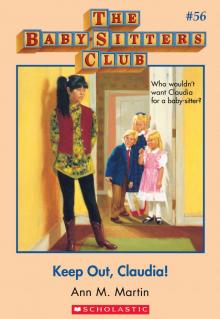 Keep Out, Claudia!
Keep Out, Claudia! Aloha, Baby-Sitters!
Aloha, Baby-Sitters!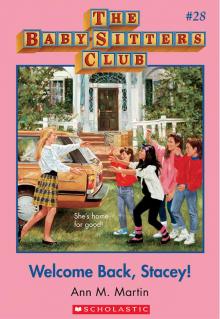 Welcome Back, Stacey
Welcome Back, Stacey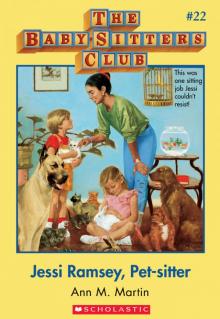 Jessi Ramsey, Pet-Sitter
Jessi Ramsey, Pet-Sitter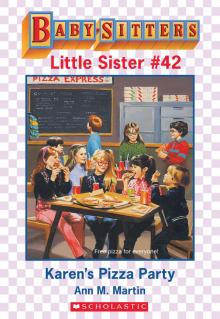 Karen's Pizza Party
Karen's Pizza Party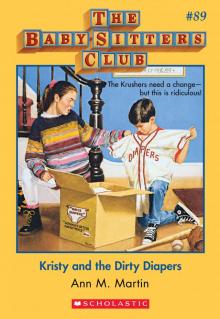 Kristy and the Dirty Diapers
Kristy and the Dirty Diapers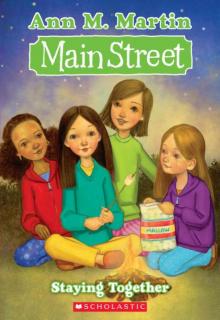 Staying Together
Staying Together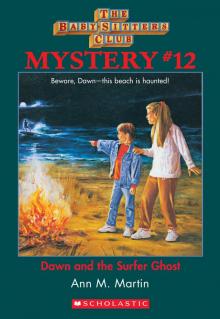 Dawn and the Surfer Ghost
Dawn and the Surfer Ghost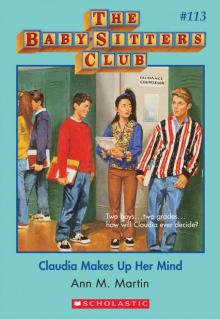 Claudia Makes Up Her Mind
Claudia Makes Up Her Mind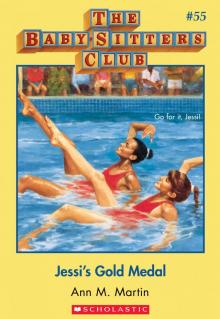 Jessi's Gold Medal
Jessi's Gold Medal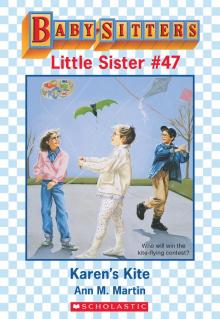 Karen's Kite
Karen's Kite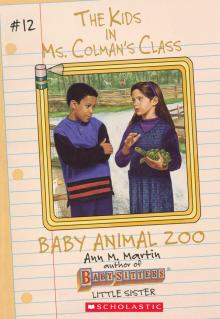 Baby Animal Zoo
Baby Animal Zoo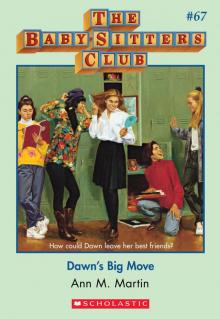 Dawn's Big Move
Dawn's Big Move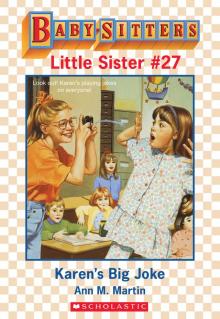 Karen's Big Joke
Karen's Big Joke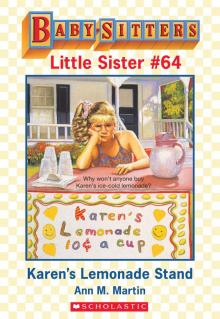 Karen's Lemonade Stand
Karen's Lemonade Stand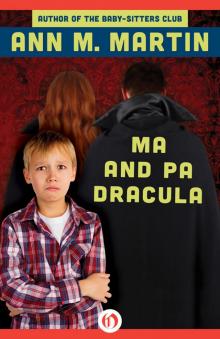 Ma and Pa Dracula
Ma and Pa Dracula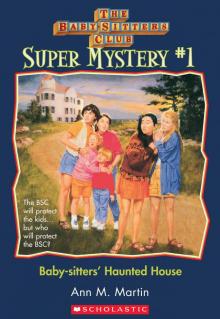 Baby-Sitters' Haunted House
Baby-Sitters' Haunted House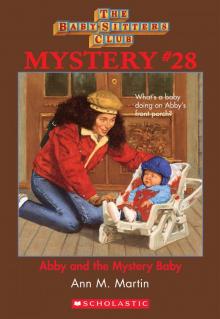 Abby and the Mystery Baby
Abby and the Mystery Baby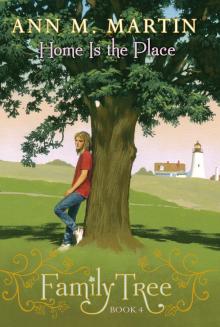 Home Is the Place
Home Is the Place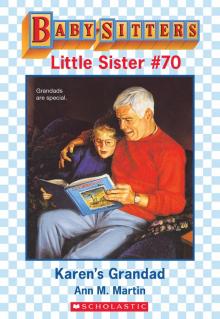 Karen's Grandad
Karen's Grandad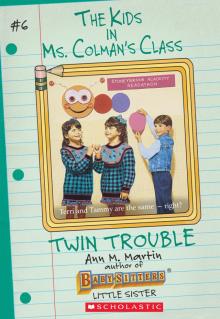 Twin Trouble
Twin Trouble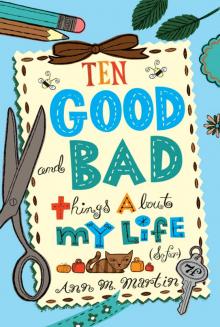 Ten Good and Bad Things About My Life (So Far)
Ten Good and Bad Things About My Life (So Far)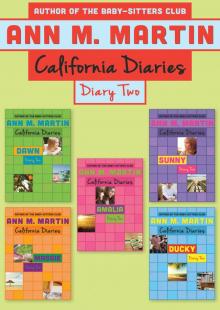 Diary Two
Diary Two Baby-Sitters Club 027
Baby-Sitters Club 027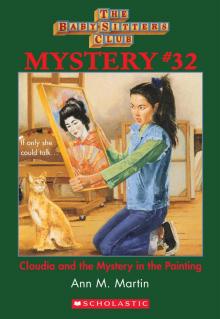 Claudia and the Mystery Painting
Claudia and the Mystery Painting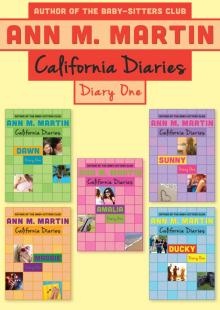 Diary One
Diary One Baby-Sitters Club 037
Baby-Sitters Club 037 Baby-Sitters Club 028
Baby-Sitters Club 028 Baby-Sitters Club 085
Baby-Sitters Club 085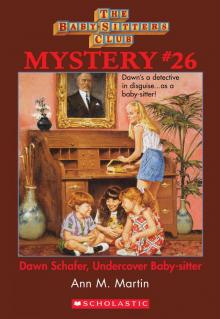 Dawn Schaffer Undercover Baby-Sitter
Dawn Schaffer Undercover Baby-Sitter Jessi's Babysitter
Jessi's Babysitter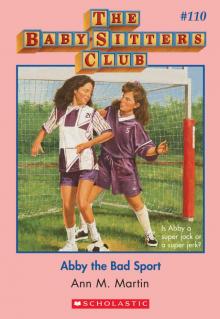 The Baby-Sitters Club #110: Abby the Bad Sport (Baby-Sitters Club, The)
The Baby-Sitters Club #110: Abby the Bad Sport (Baby-Sitters Club, The) Karen's Little Sister
Karen's Little Sister Baby-Sitters Club 058
Baby-Sitters Club 058 Claudia And The Genius On Elm St.
Claudia And The Genius On Elm St.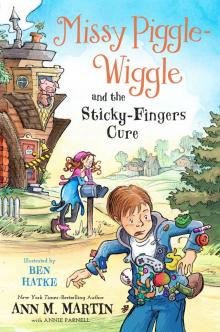 Missy Piggle-Wiggle and the Sticky-Fingers Cure
Missy Piggle-Wiggle and the Sticky-Fingers Cure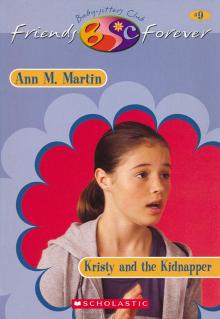 Kristy and Kidnapper
Kristy and Kidnapper Baby-Sitters Club 041
Baby-Sitters Club 041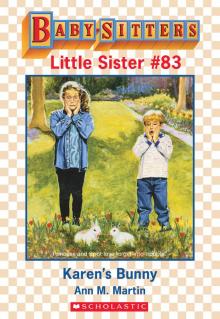 Karen's Bunny Trouble
Karen's Bunny Trouble Baby-Sitters Club 032
Baby-Sitters Club 032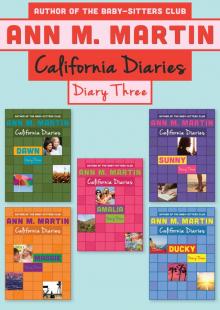 Diary Three
Diary Three Christmas Chiller
Christmas Chiller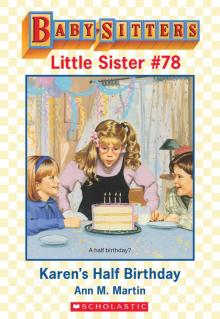 Karen's Half-Birthday
Karen's Half-Birthday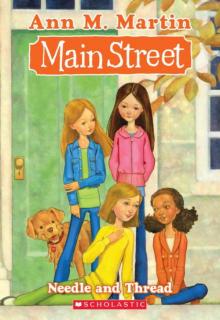 Needle and Thread
Needle and Thread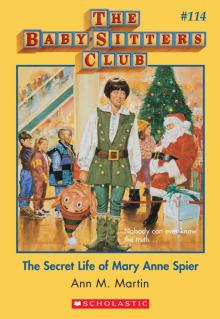 Secret Life of Mary Anne Spier
Secret Life of Mary Anne Spier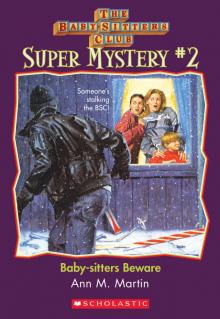 Baby-Sitters Beware
Baby-Sitters Beware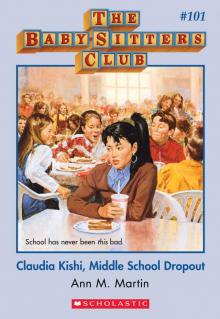 Claudia Kishi, Middle School Drop-Out
Claudia Kishi, Middle School Drop-Out Logan Likes Mary Anne !
Logan Likes Mary Anne ! Baby-Sitters Club 061
Baby-Sitters Club 061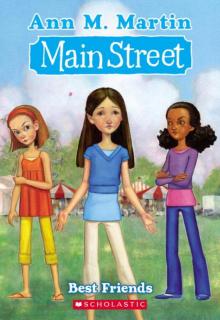 Best Friends
Best Friends Baby-Sitters Club 031
Baby-Sitters Club 031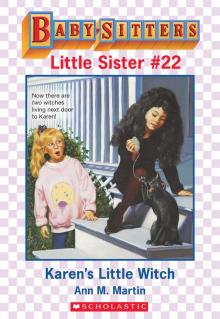 Karen's Little Witch
Karen's Little Witch Jessi Ramsey, Petsitter
Jessi Ramsey, Petsitter Baby-Sitters Club 123
Baby-Sitters Club 123 Baby-Sitters Club 059
Baby-Sitters Club 059 Baby-Sitters Club 033
Baby-Sitters Club 033 Baby-Sitters Club 060
Baby-Sitters Club 060 Baby-Sitters Club 094
Baby-Sitters Club 094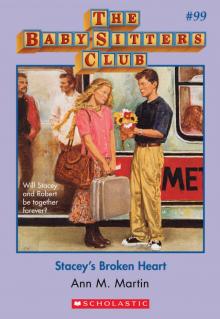 The Baby-Sitters Club #99: Stacey's Broken Heart
The Baby-Sitters Club #99: Stacey's Broken Heart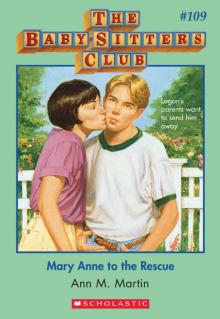 The Baby-Sitters Club #109: Mary Anne to the Rescue (Baby-Sitters Club, The)
The Baby-Sitters Club #109: Mary Anne to the Rescue (Baby-Sitters Club, The) Mystery At Claudia's House
Mystery At Claudia's House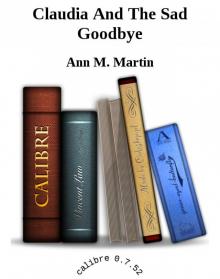 Claudia And The Sad Goodbye
Claudia And The Sad Goodbye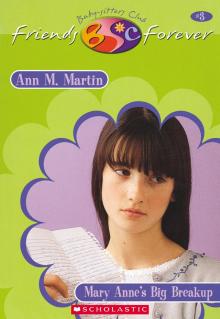 Mary Anne's Big Break-Up
Mary Anne's Big Break-Up Baby-Sitters Club 025
Baby-Sitters Club 025 Baby-Sitters Club 042
Baby-Sitters Club 042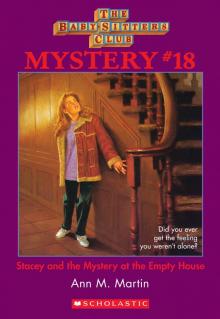 Stacey and the Mystery of the Empty House
Stacey and the Mystery of the Empty House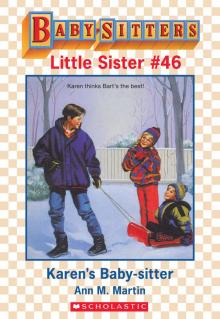 Karen's Baby-Sitter
Karen's Baby-Sitter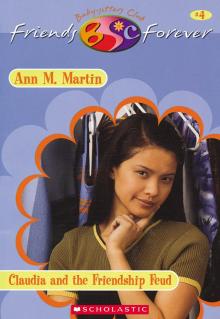 Claudia's Friendship Feud
Claudia's Friendship Feud Baby-Sitters Club 090
Baby-Sitters Club 090 Baby-Sitters Club 021
Baby-Sitters Club 021 Baby-Sitters Club 056
Baby-Sitters Club 056 Baby-Sitters Club 040
Baby-Sitters Club 040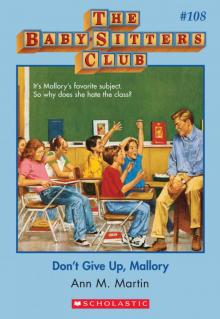 The Baby-Sitters Club #108: Don't Give Up, Mallory (Baby-Sitters Club, The)
The Baby-Sitters Club #108: Don't Give Up, Mallory (Baby-Sitters Club, The)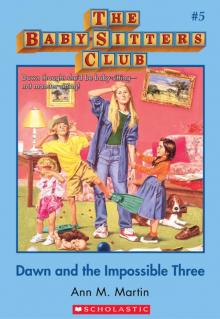 Dawn and the Impossible Three
Dawn and the Impossible Three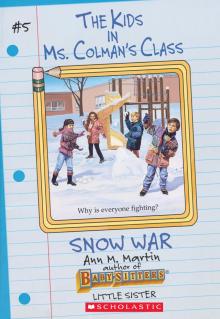 The Snow War
The Snow War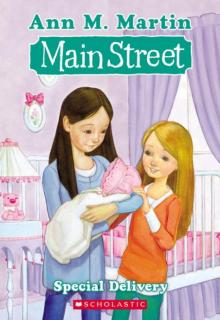 Special Delivery
Special Delivery Baby-Sitters Club 057
Baby-Sitters Club 057 Mary Anne And Too Many Babies
Mary Anne And Too Many Babies Baby-Sitters Club 030
Baby-Sitters Club 030